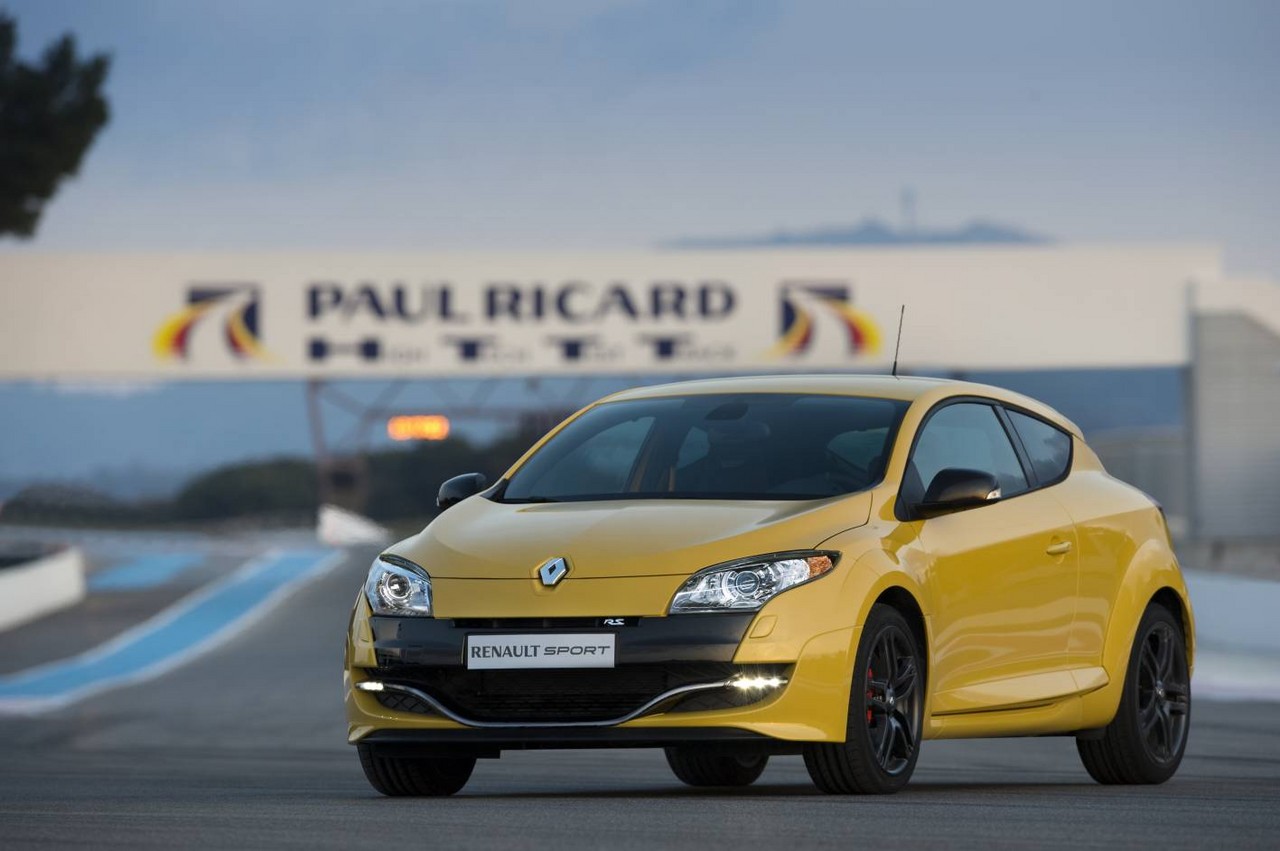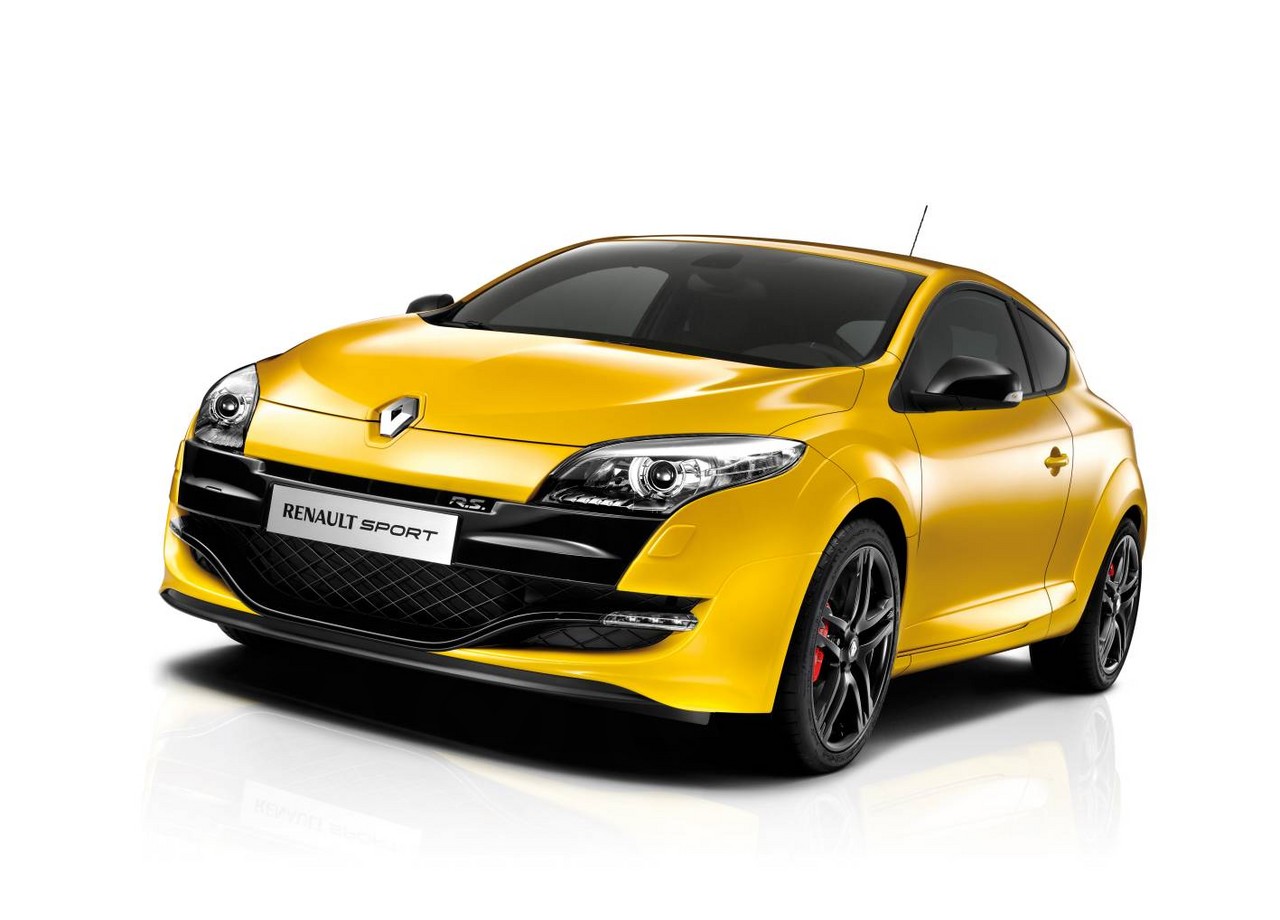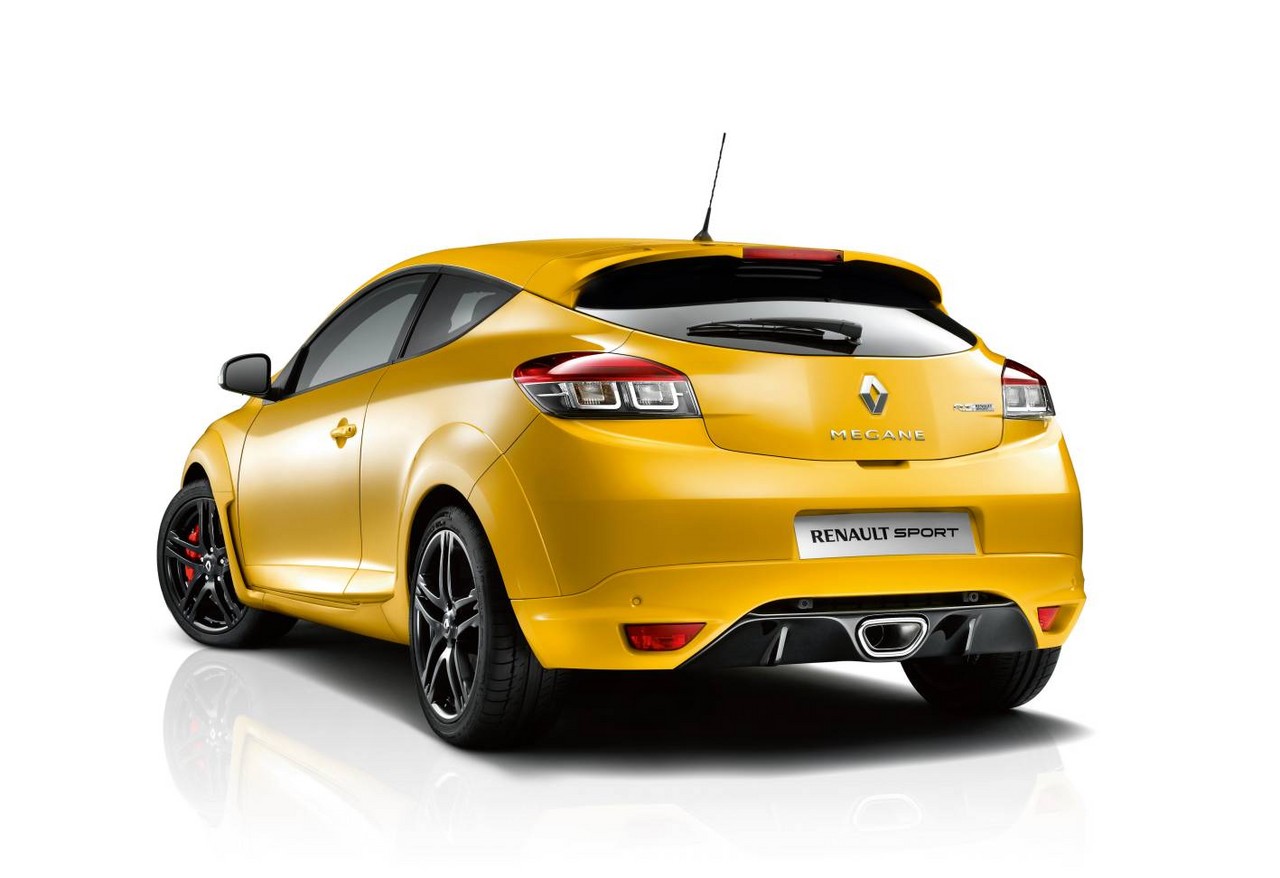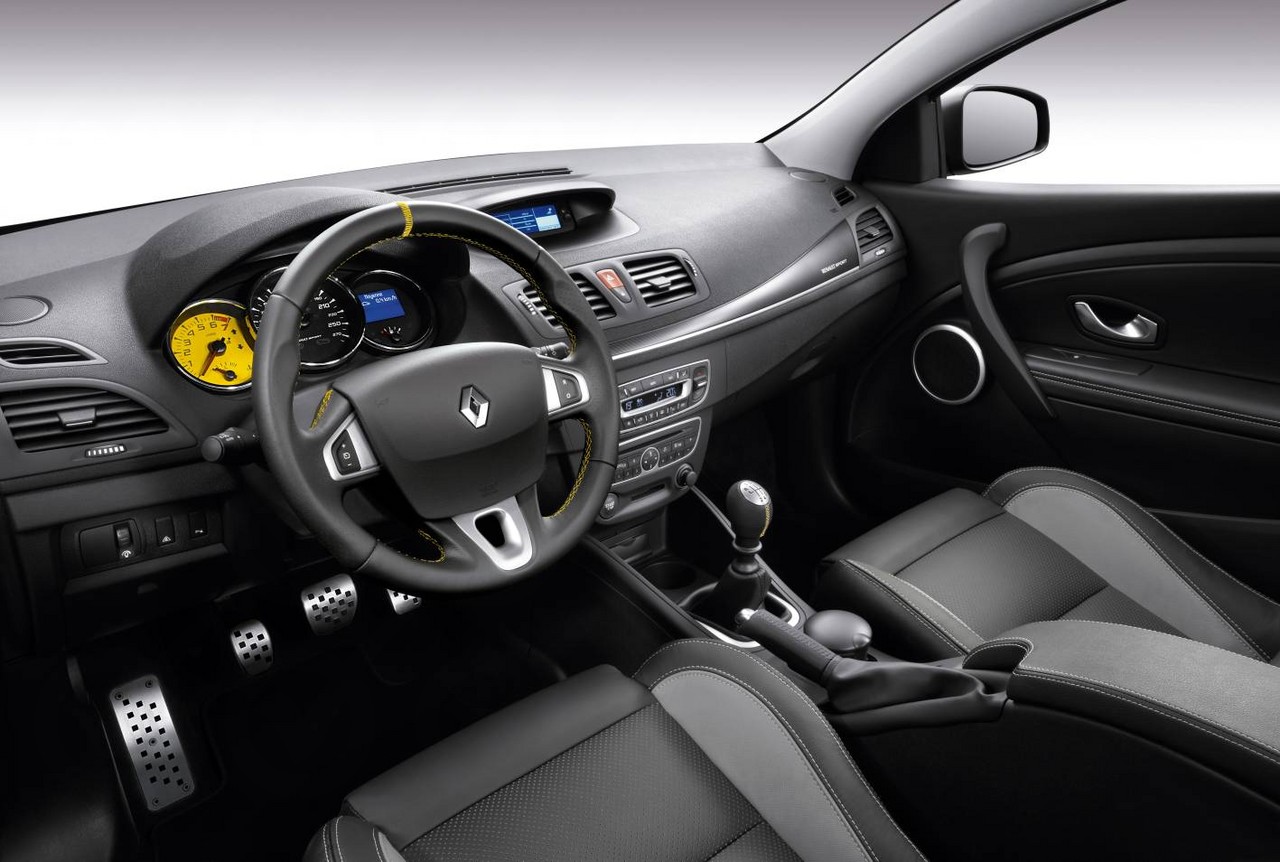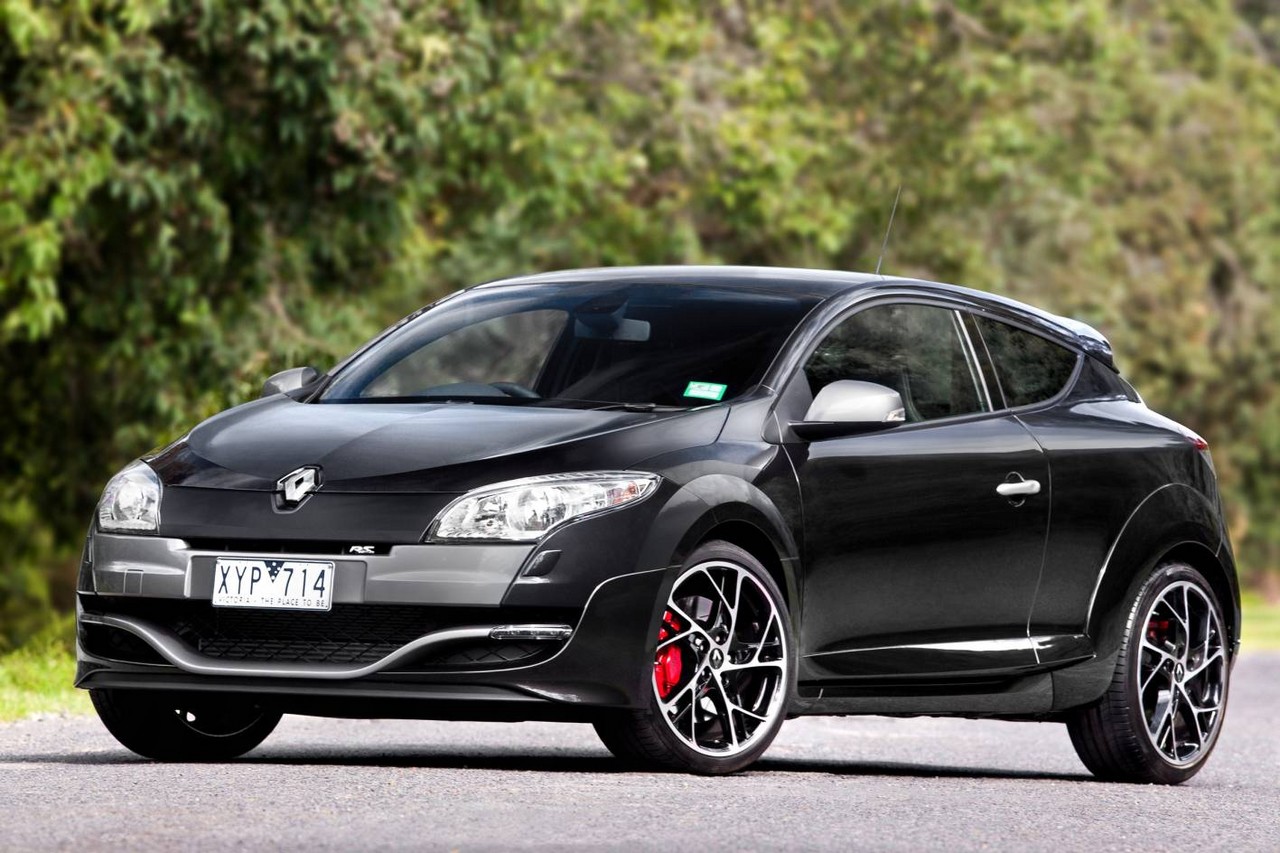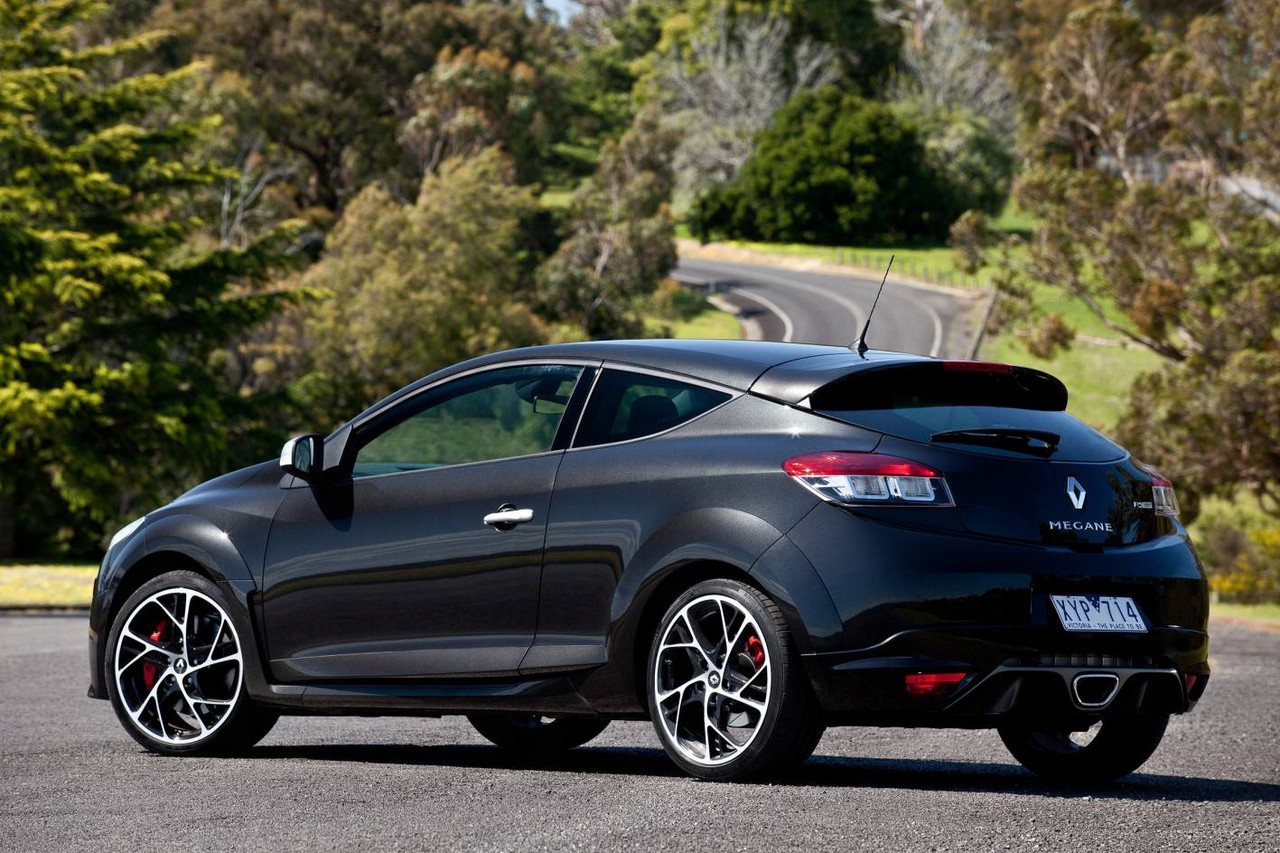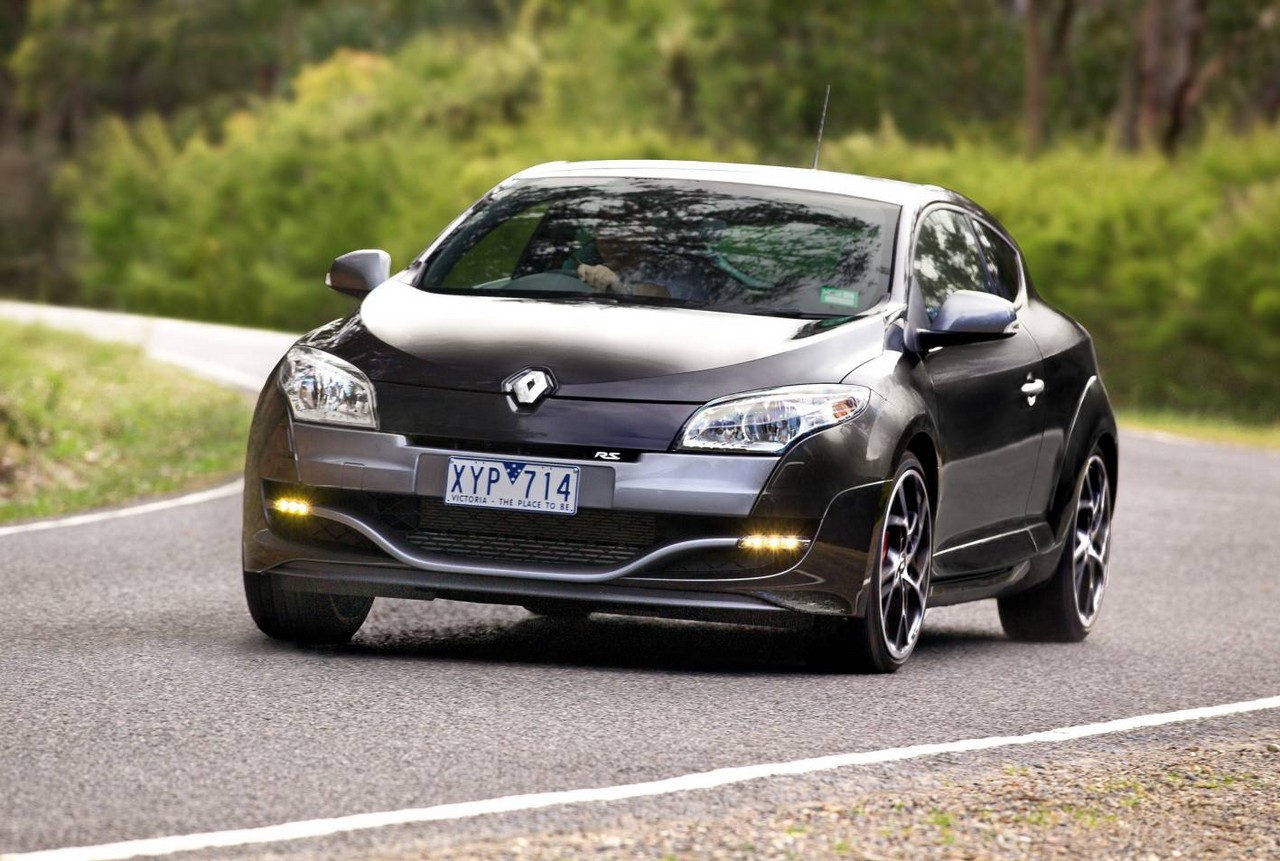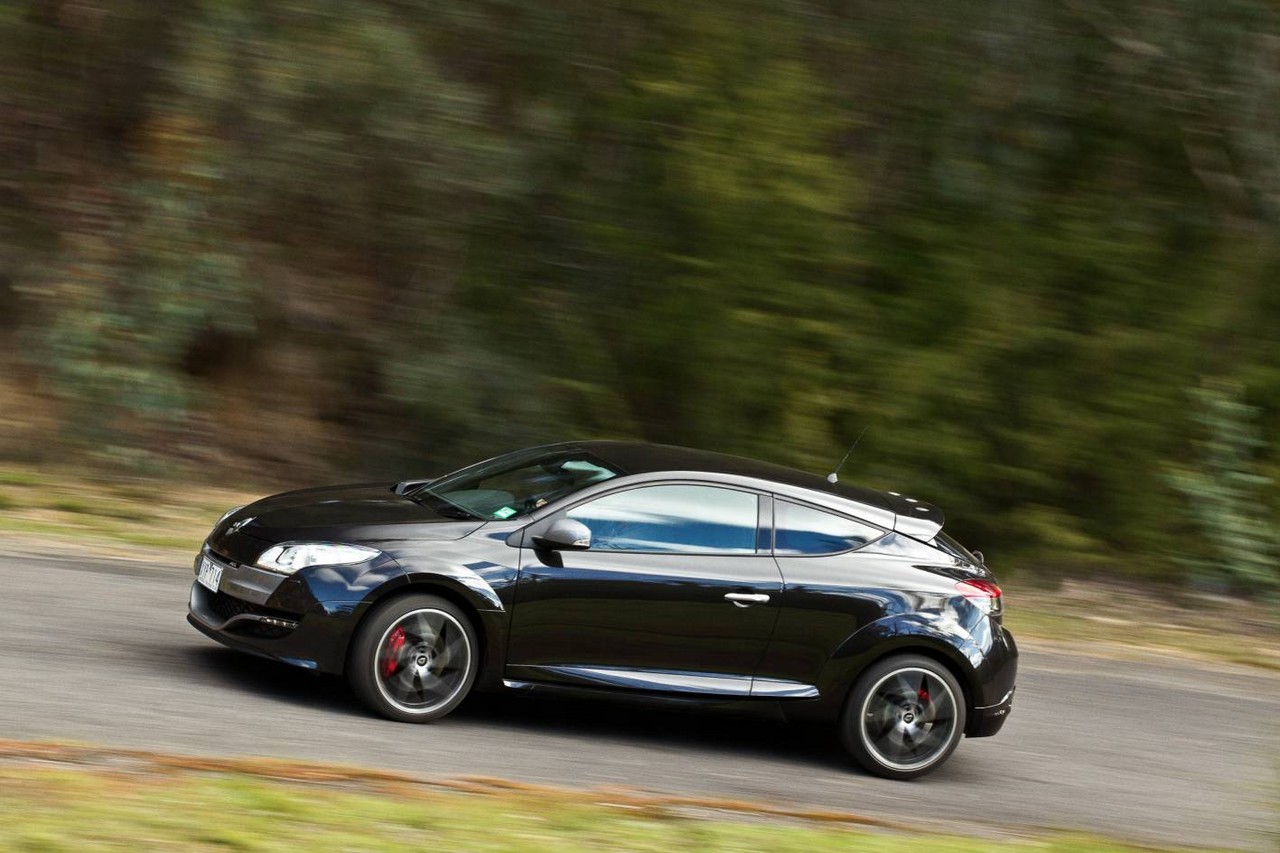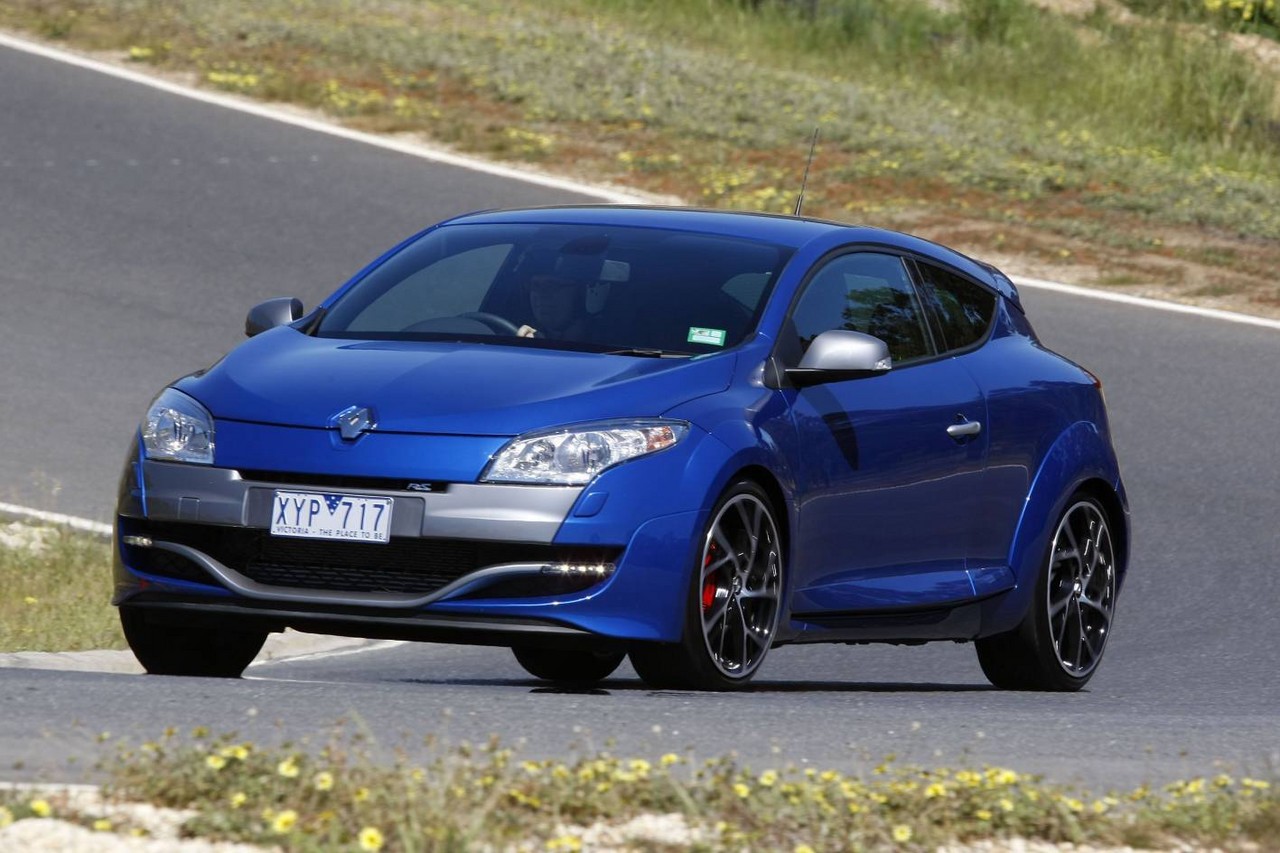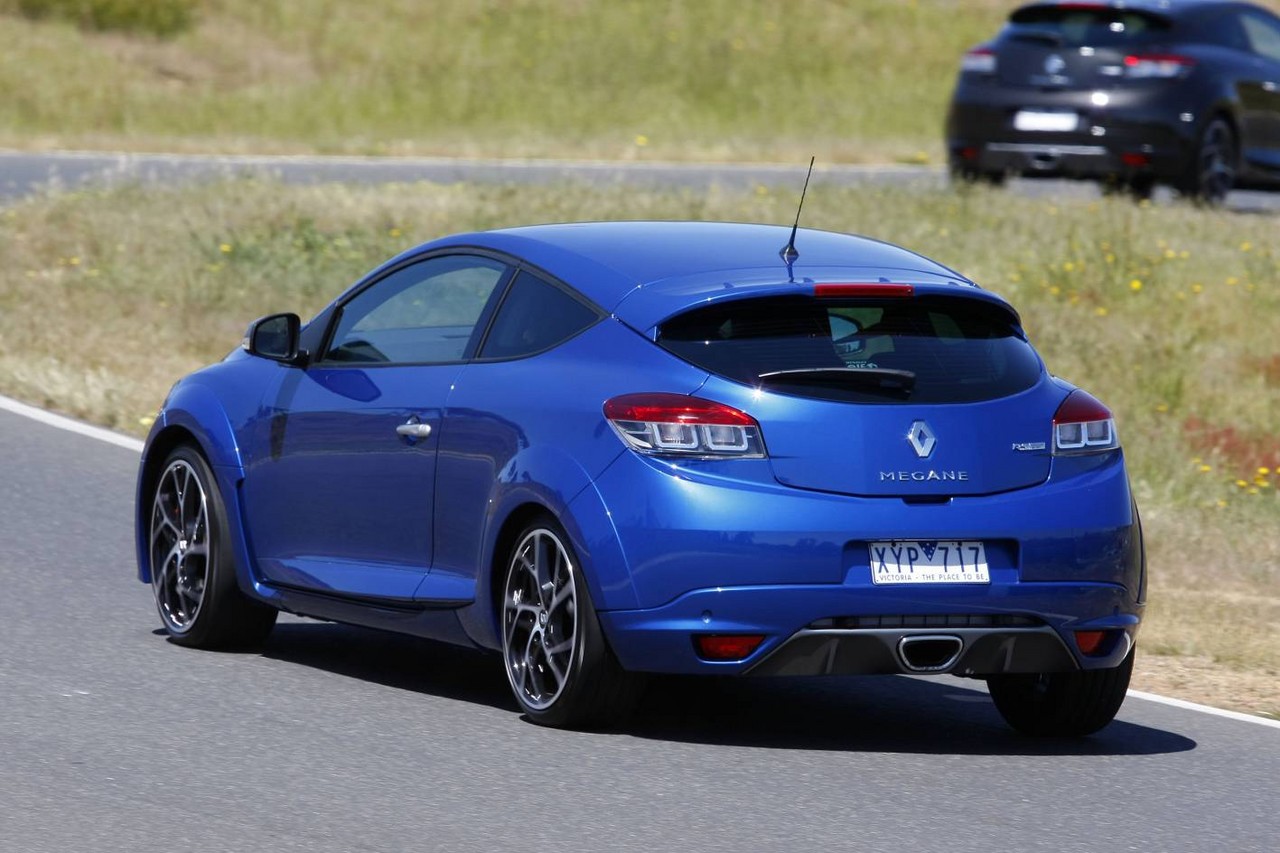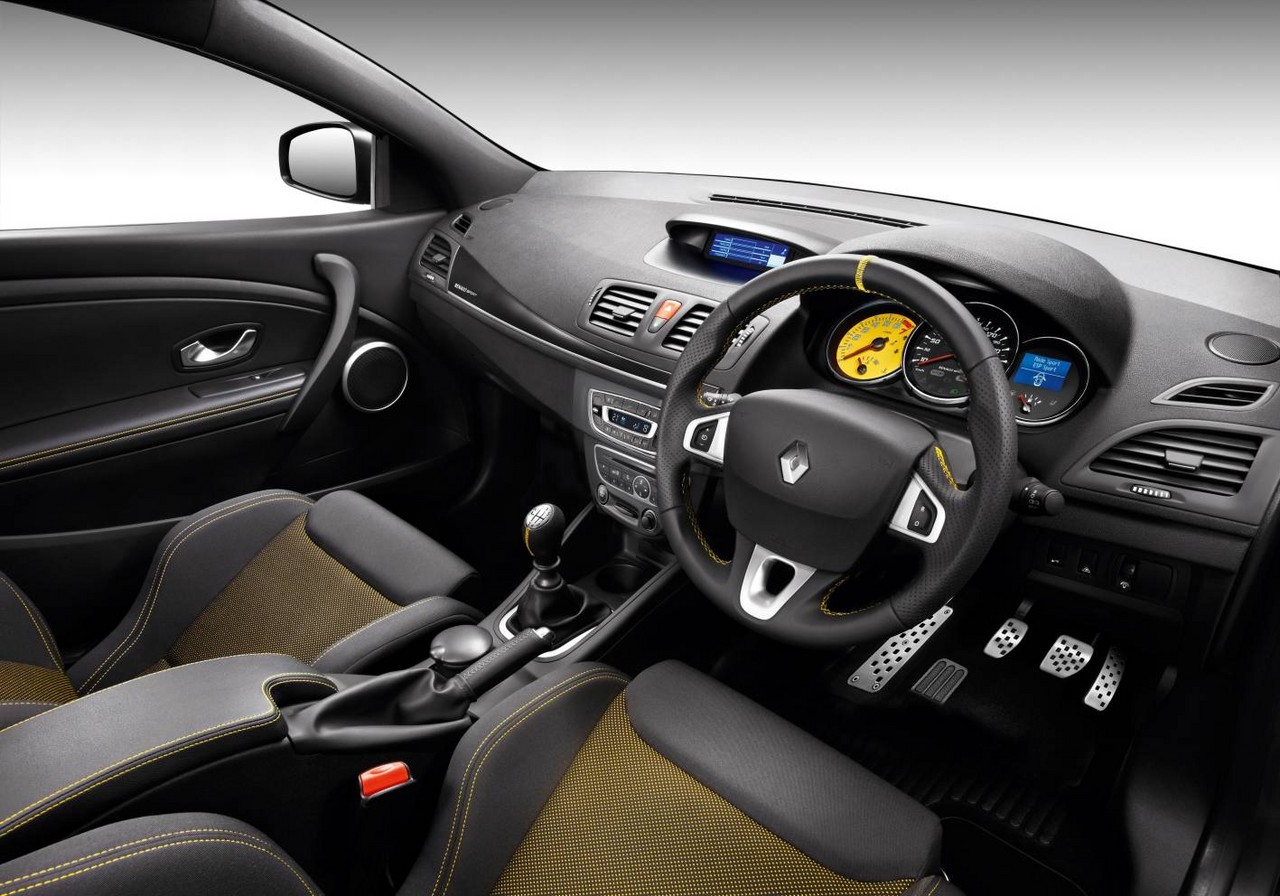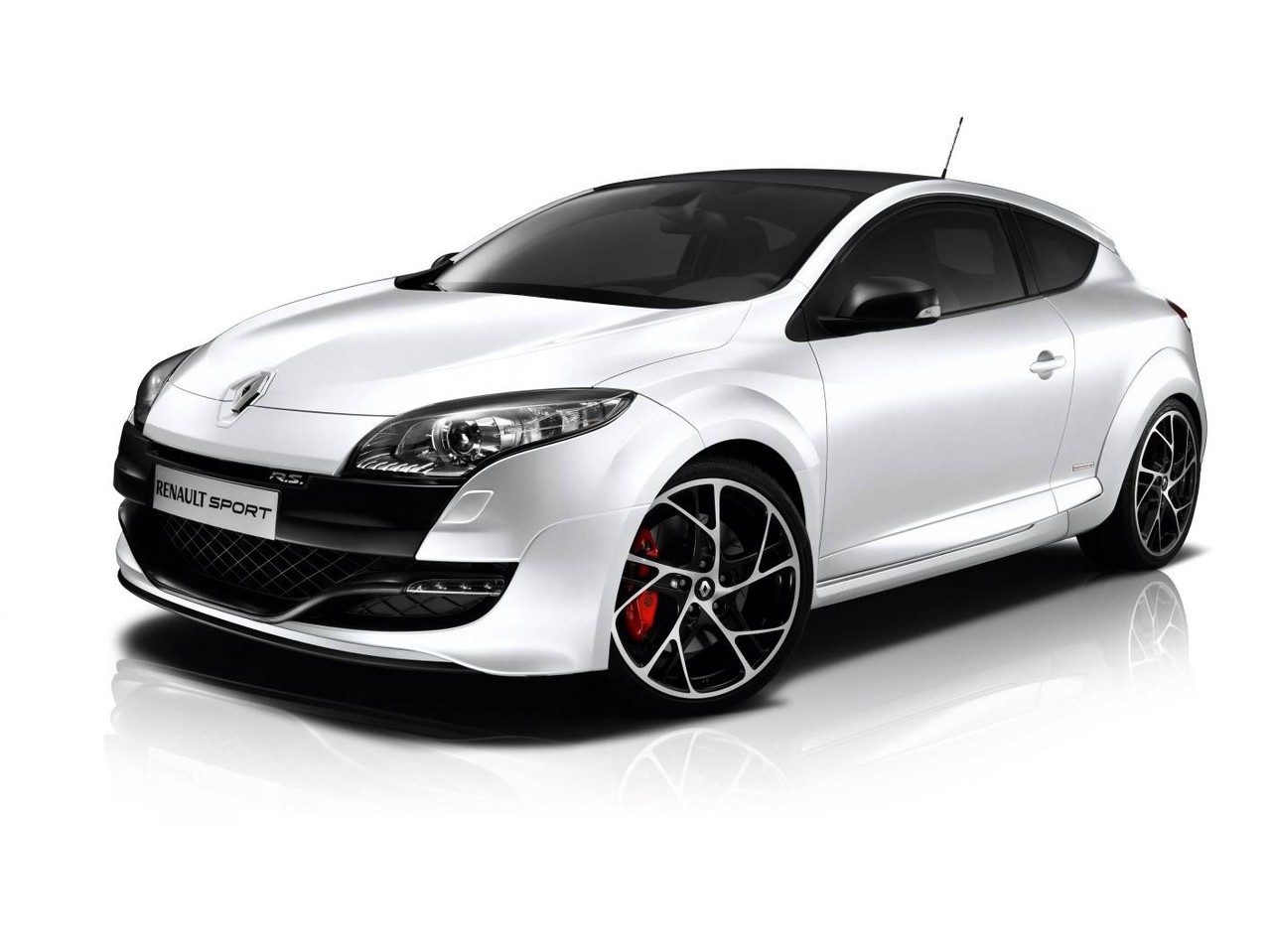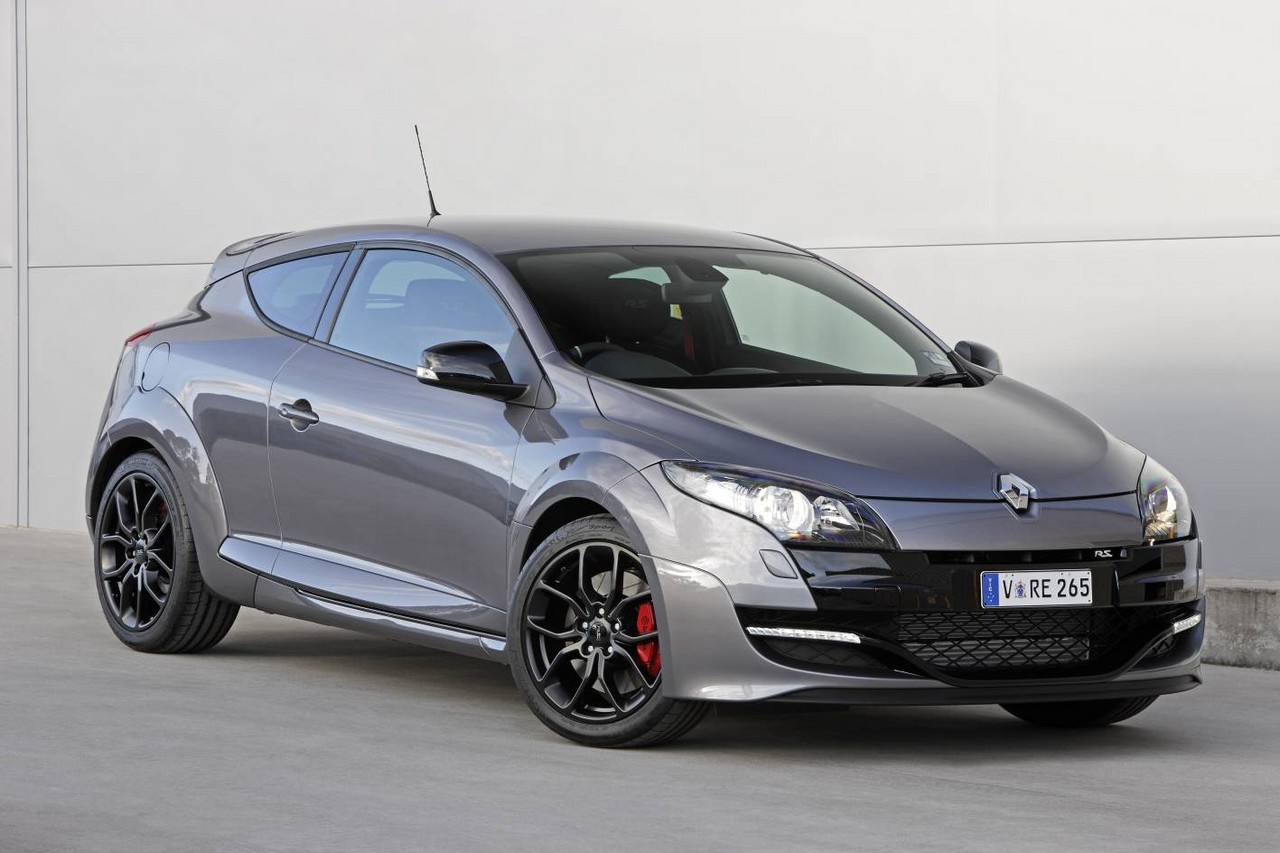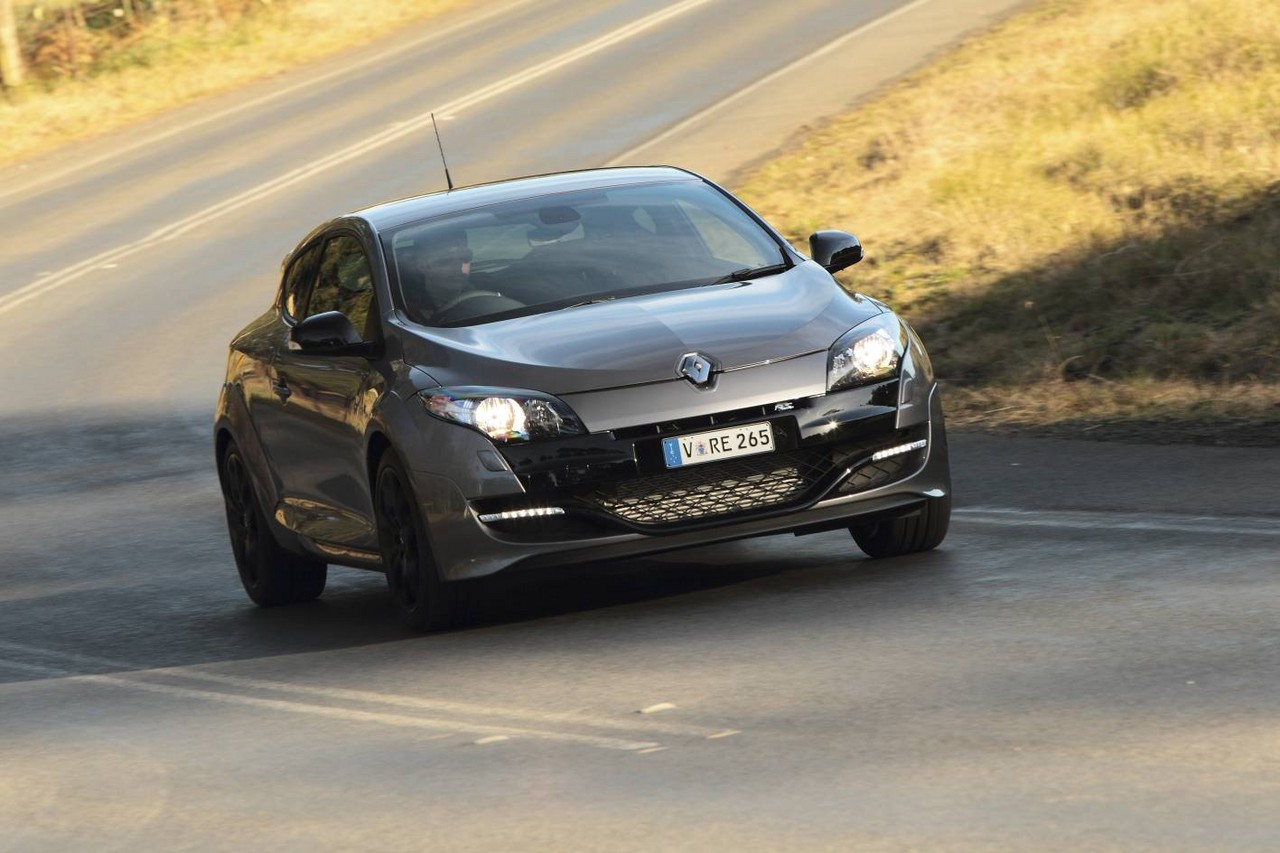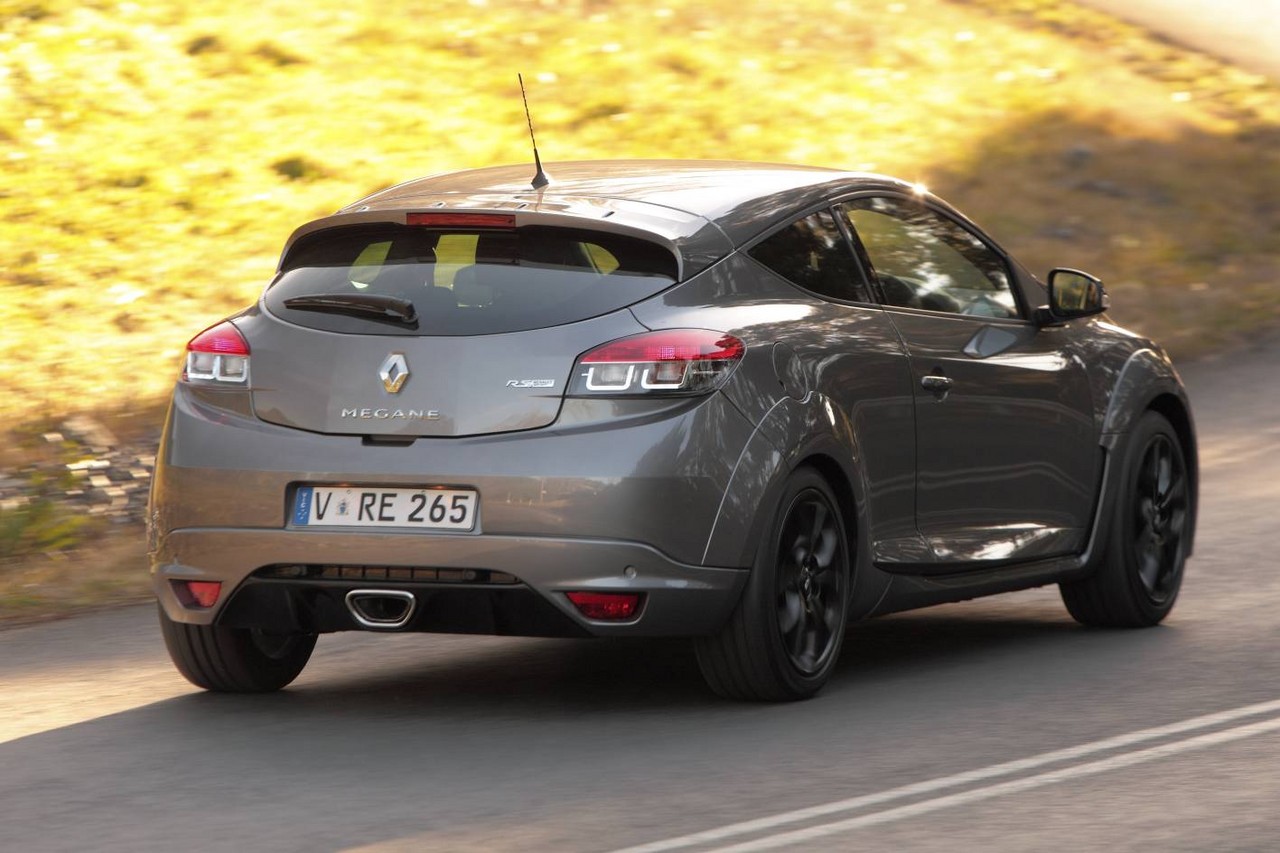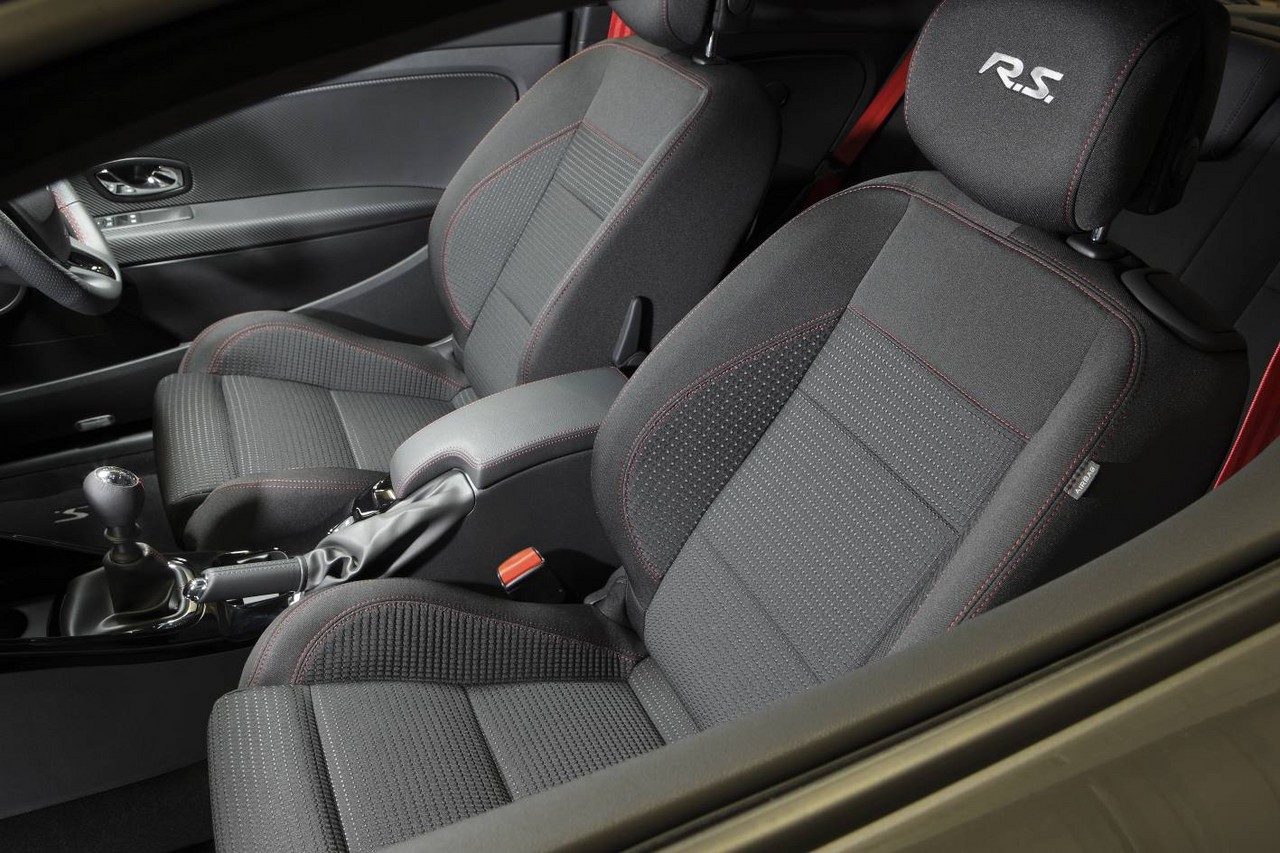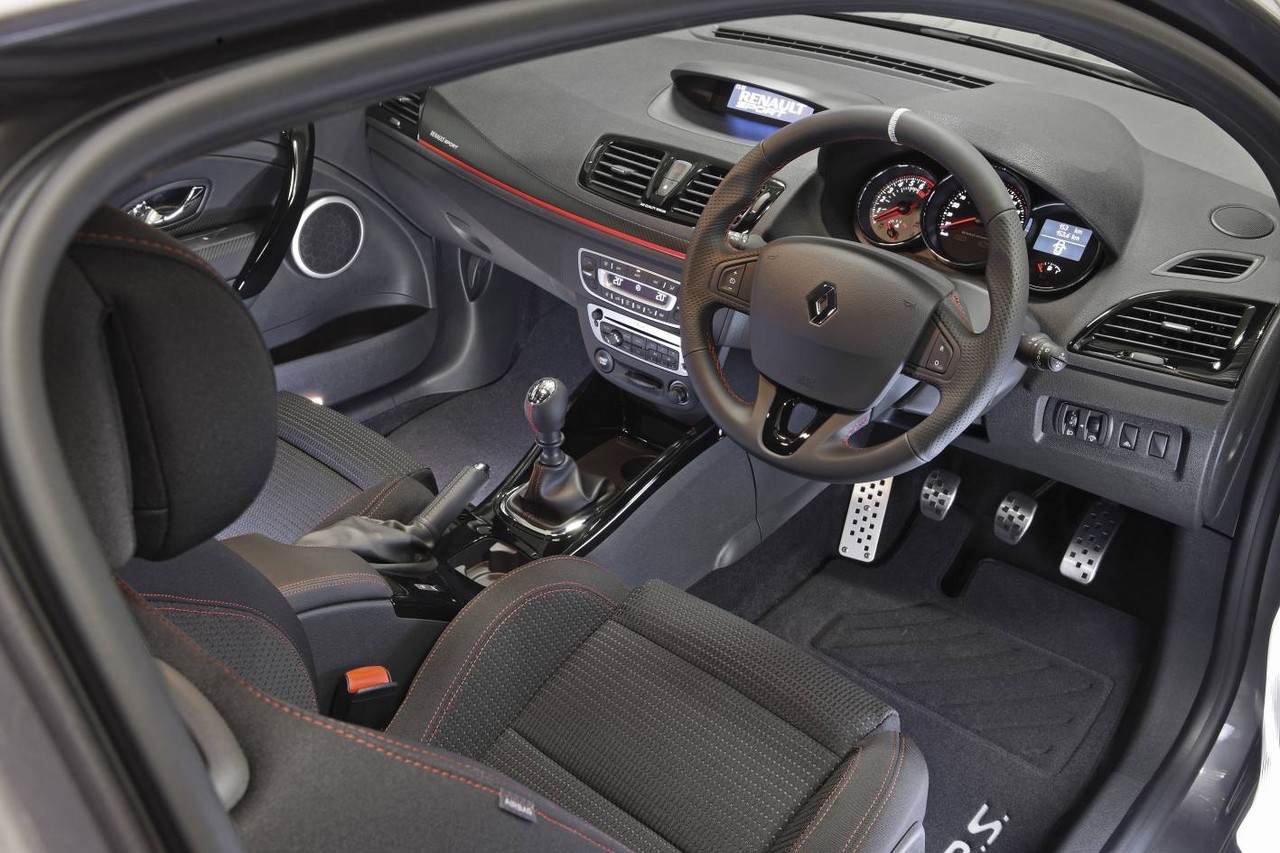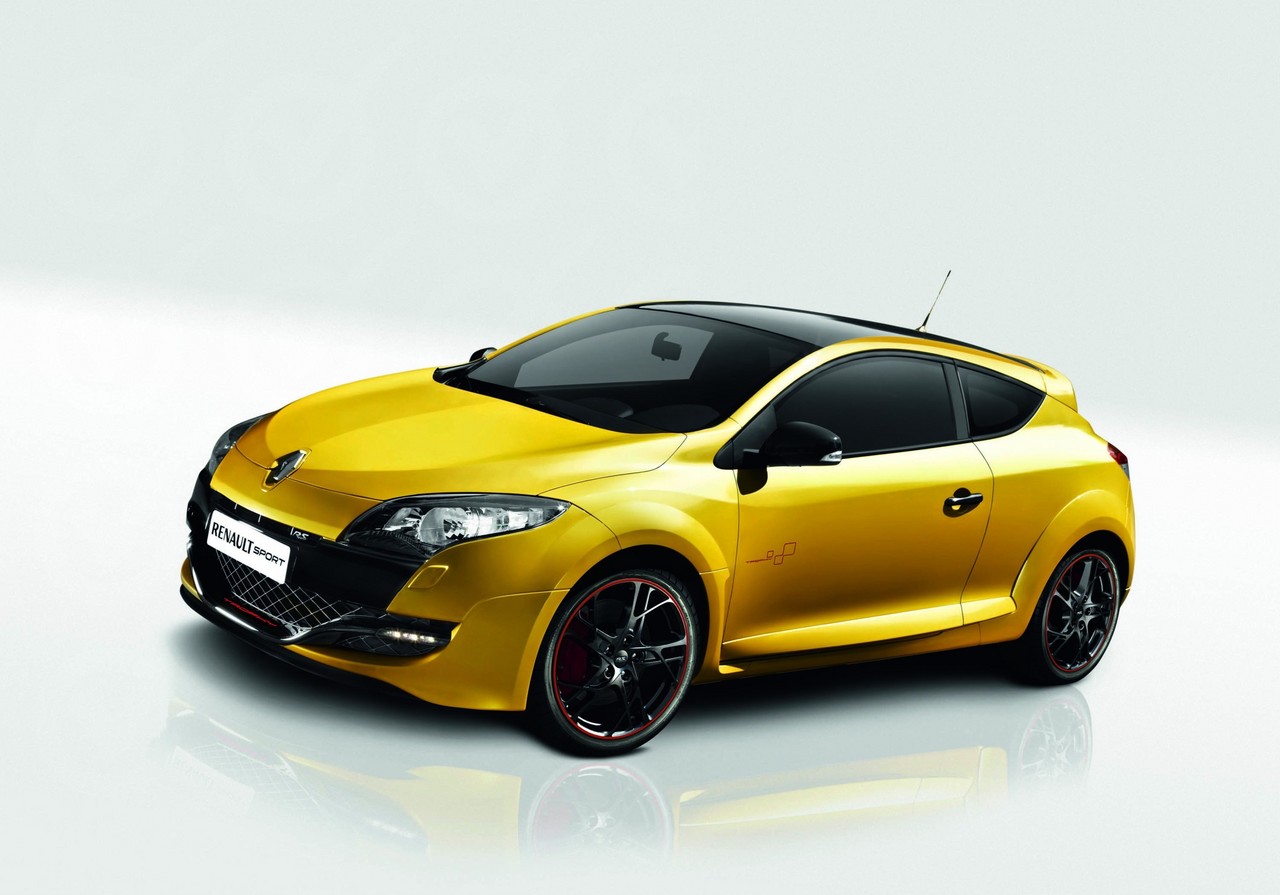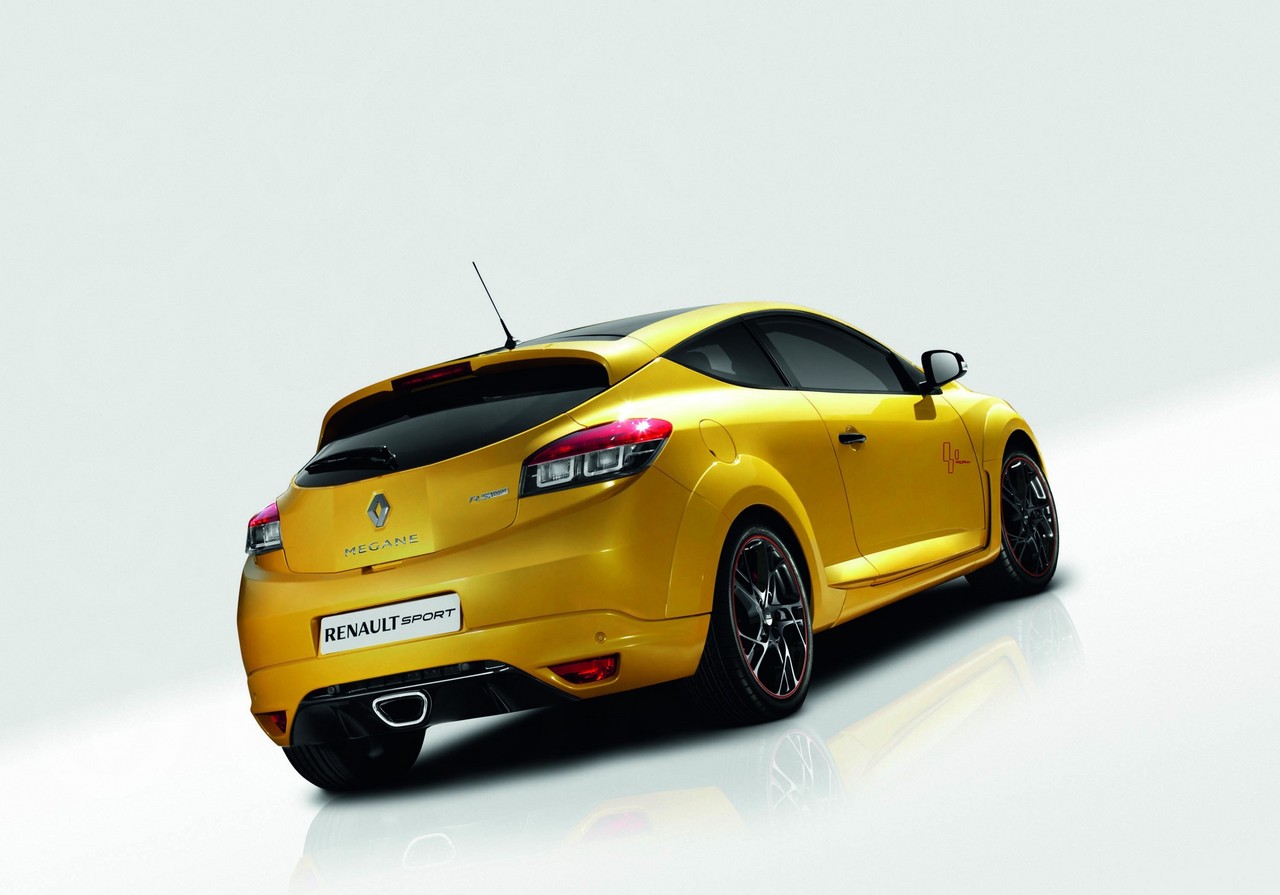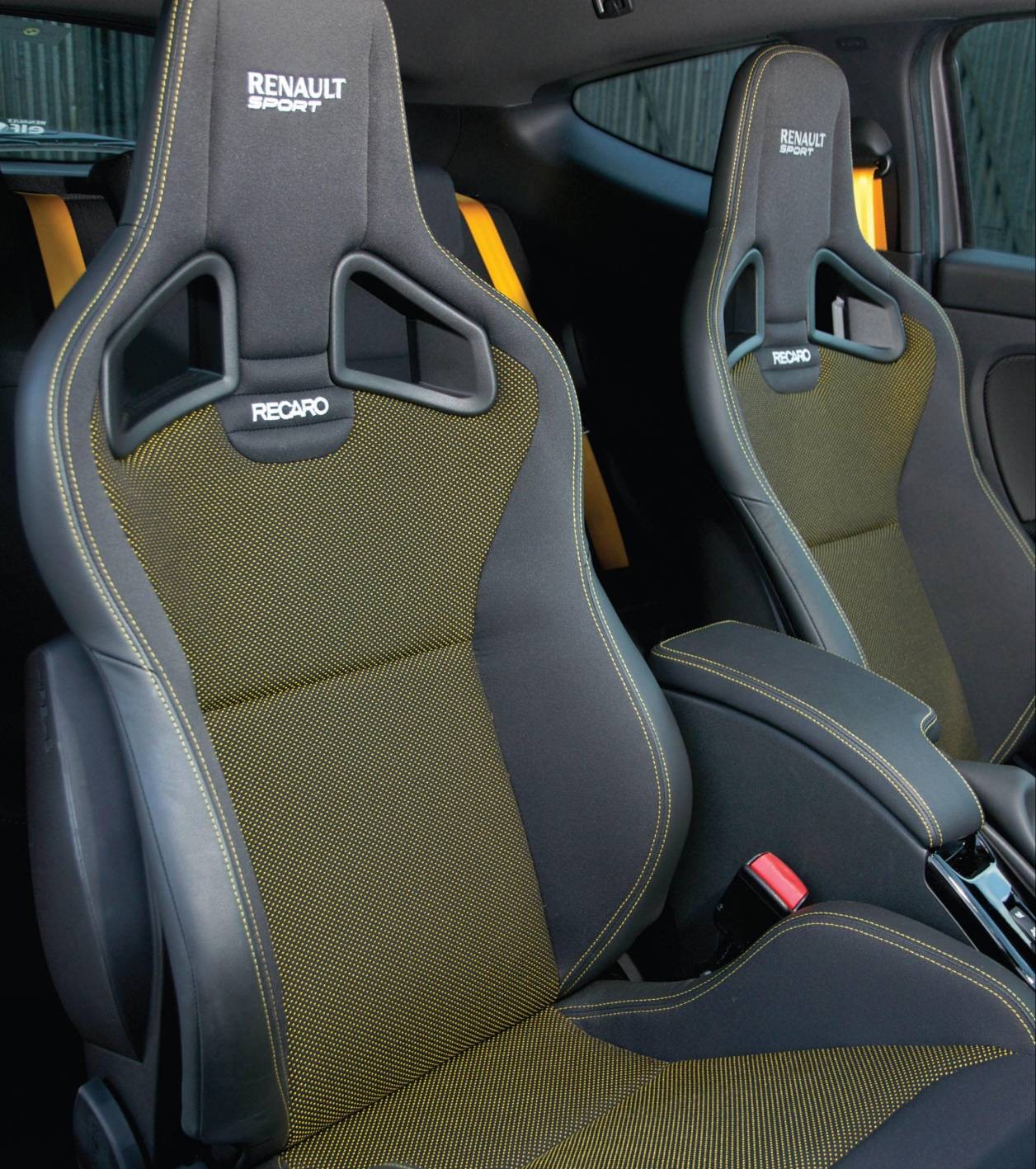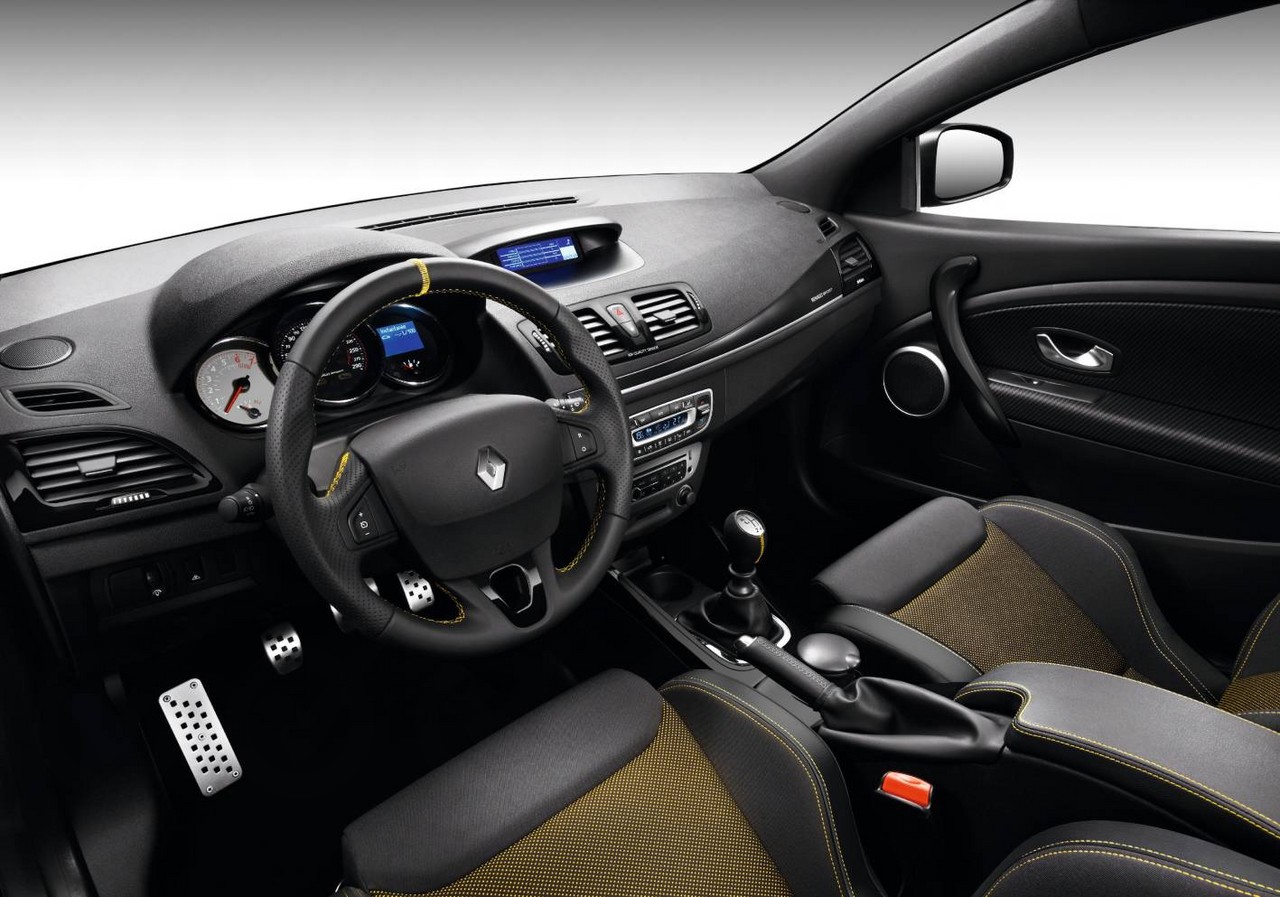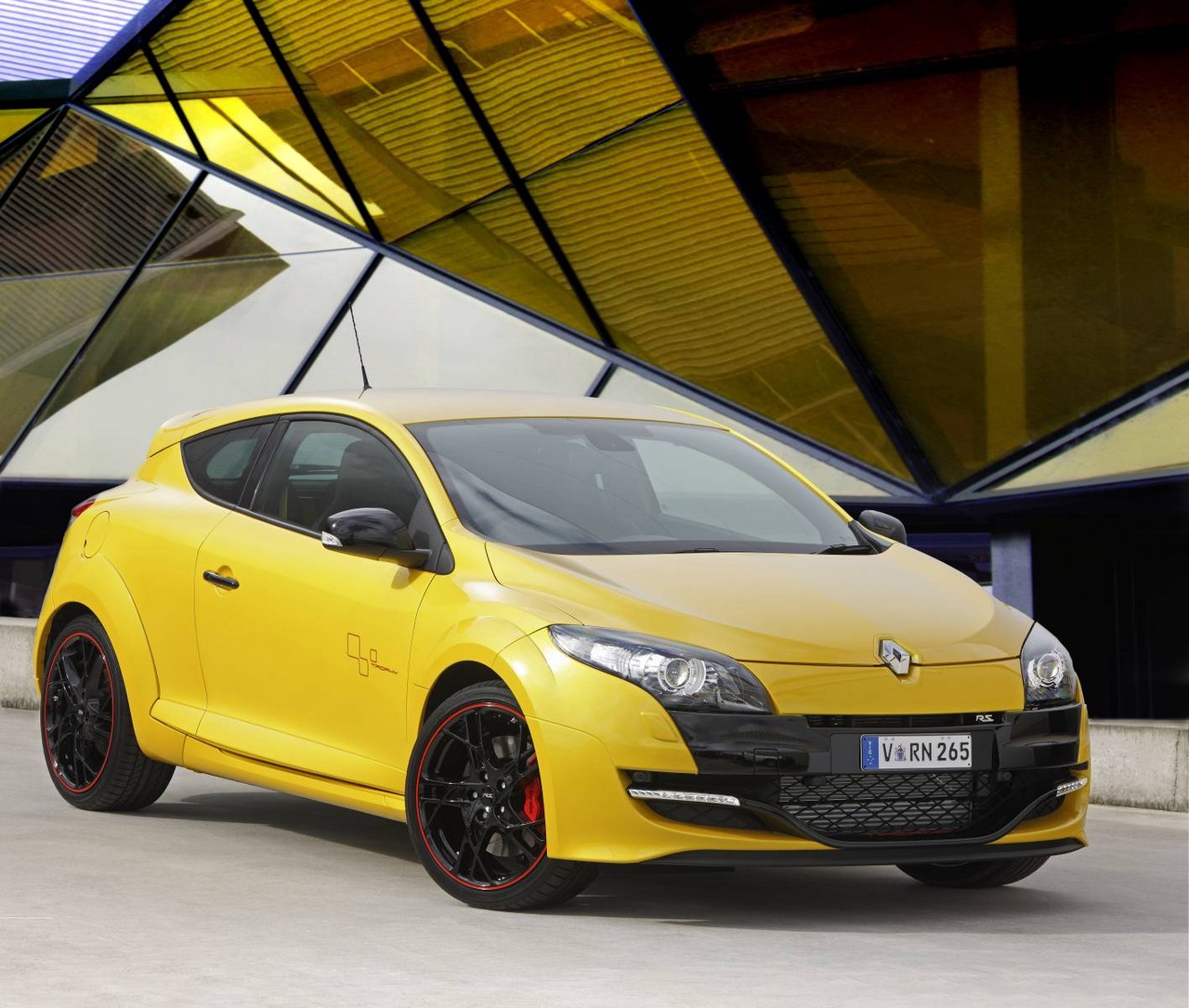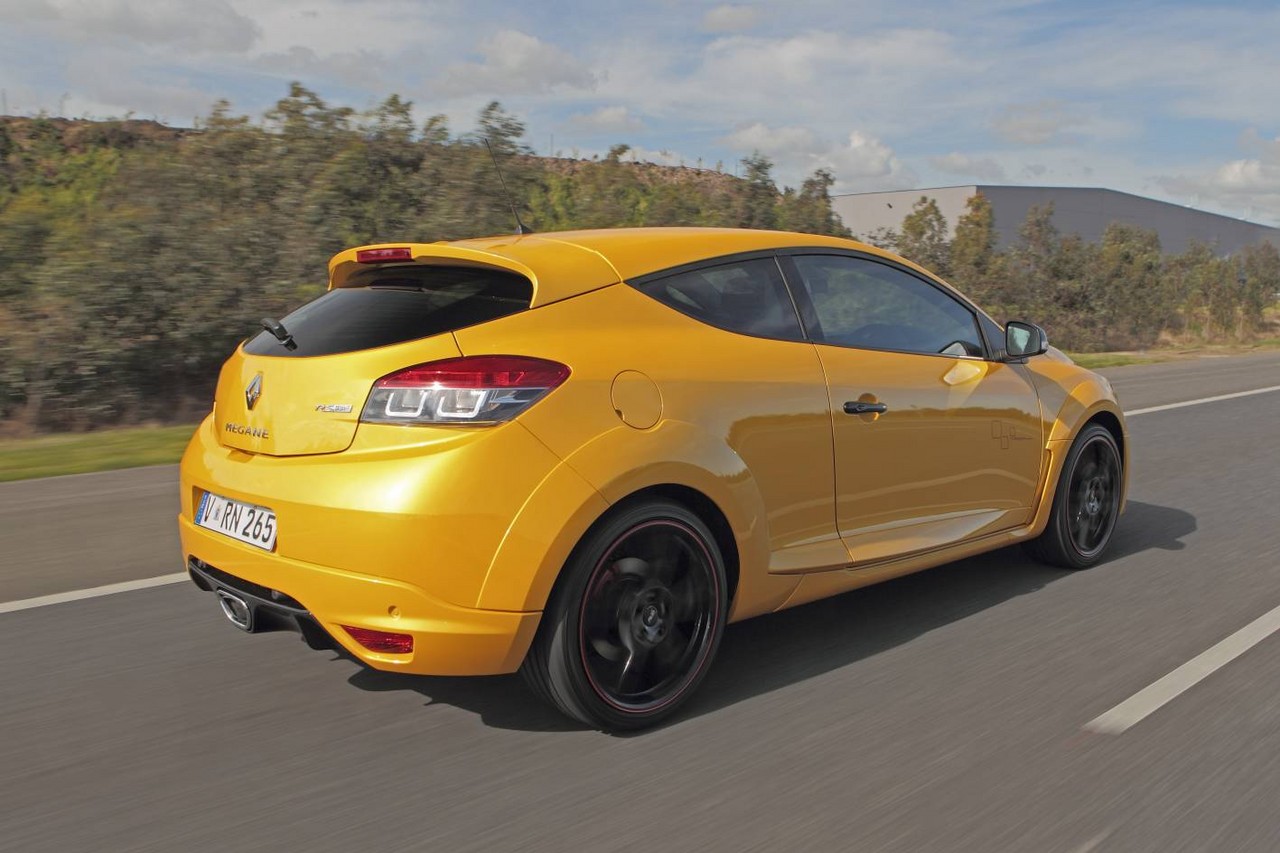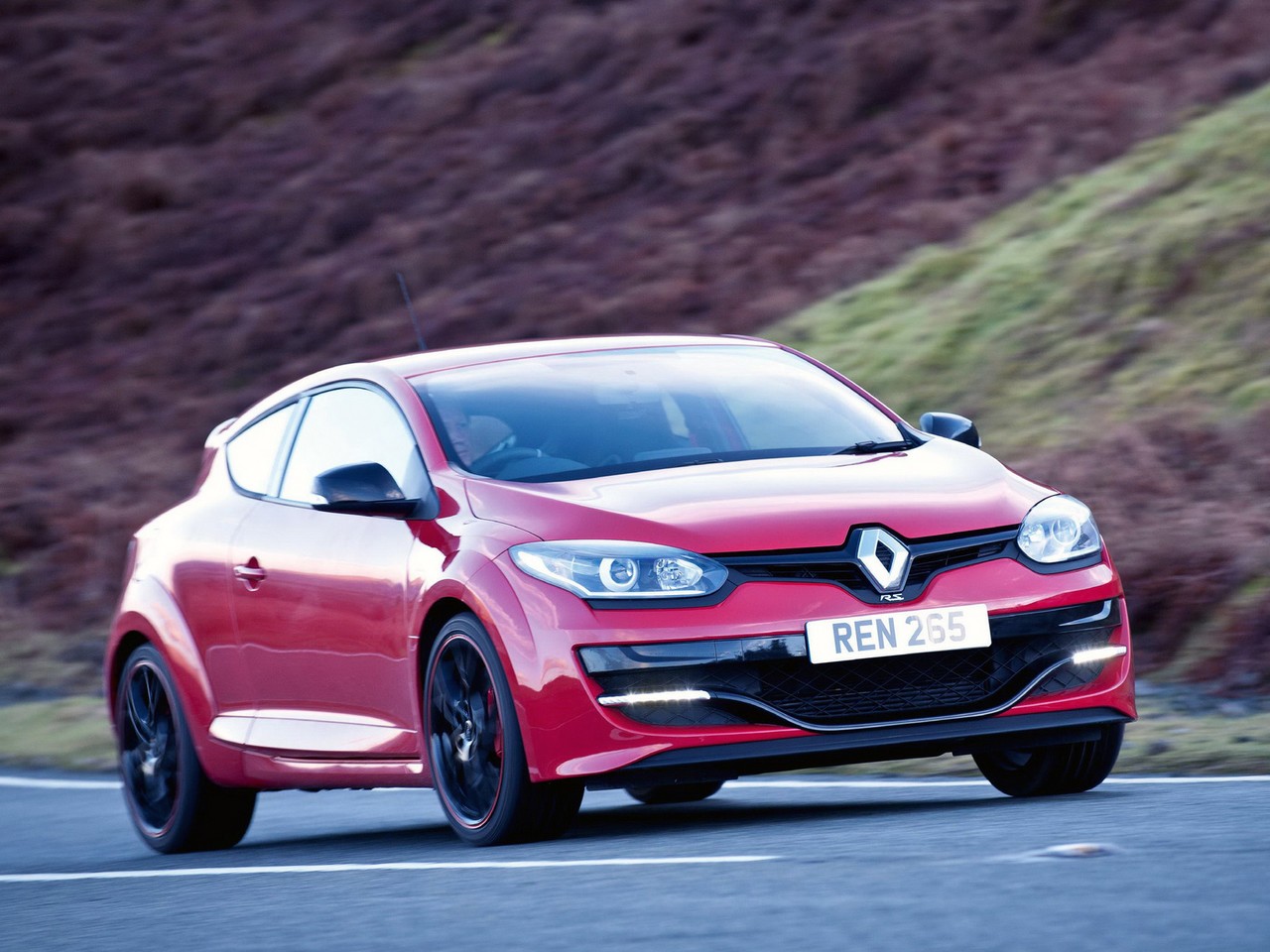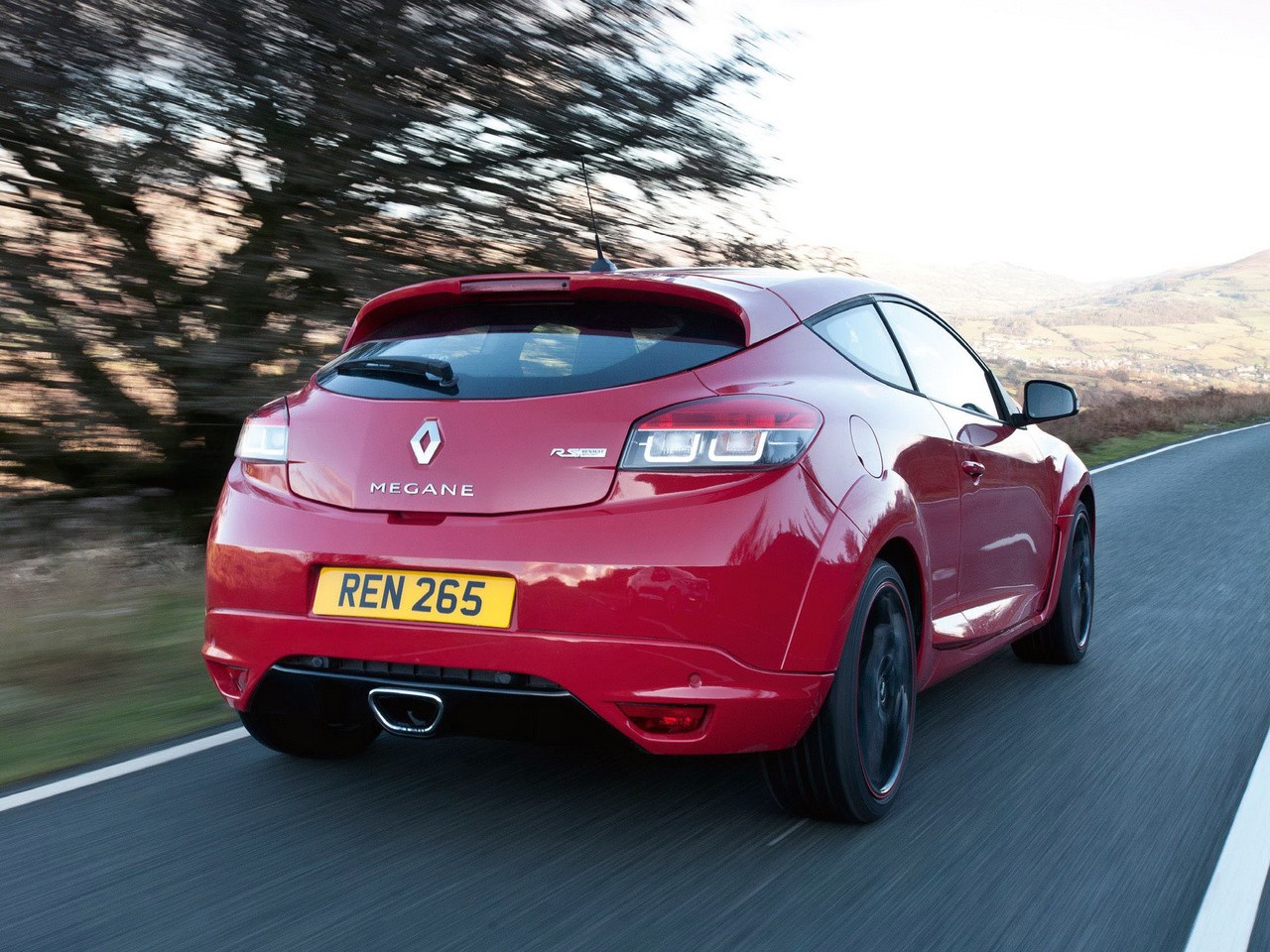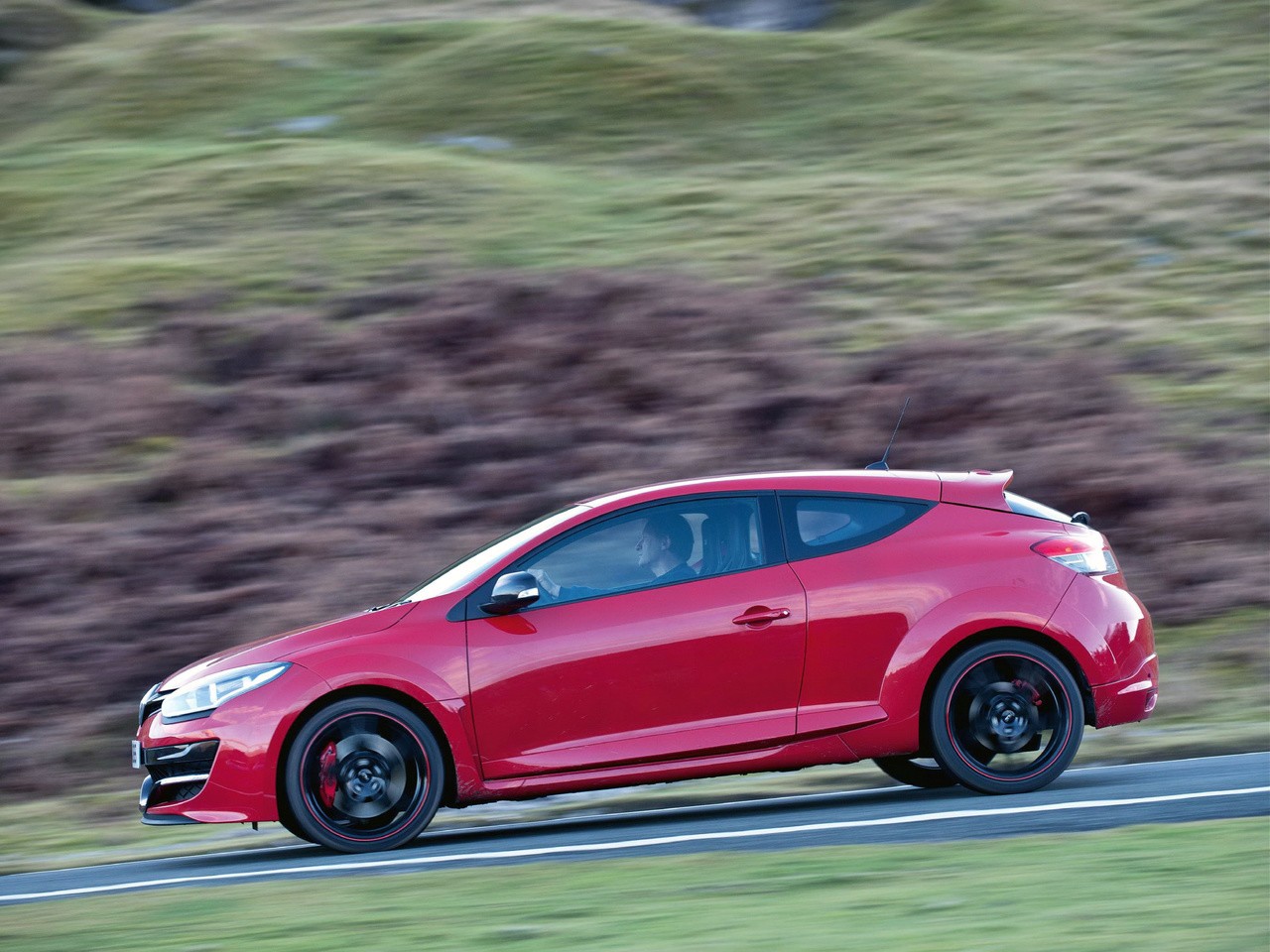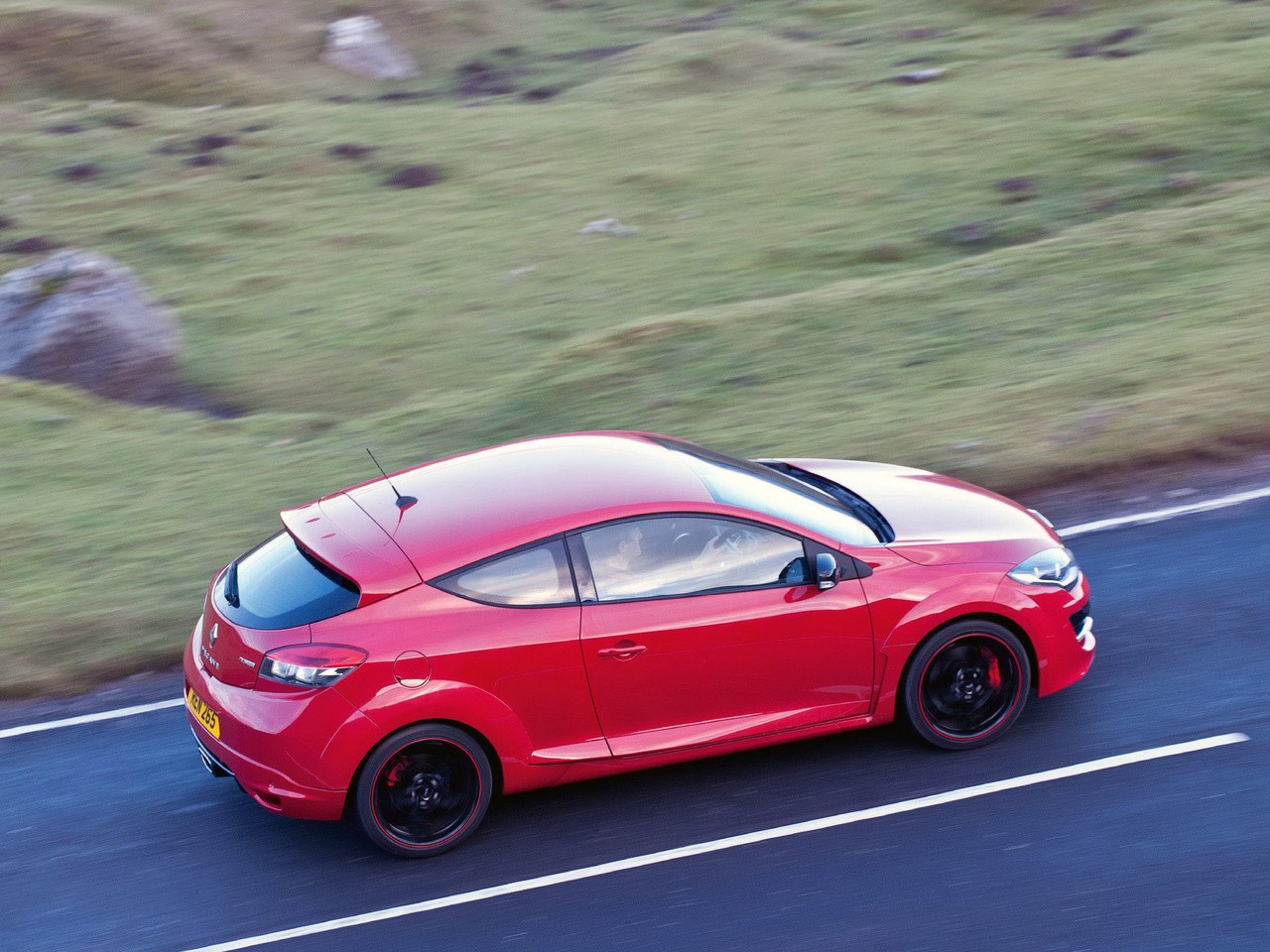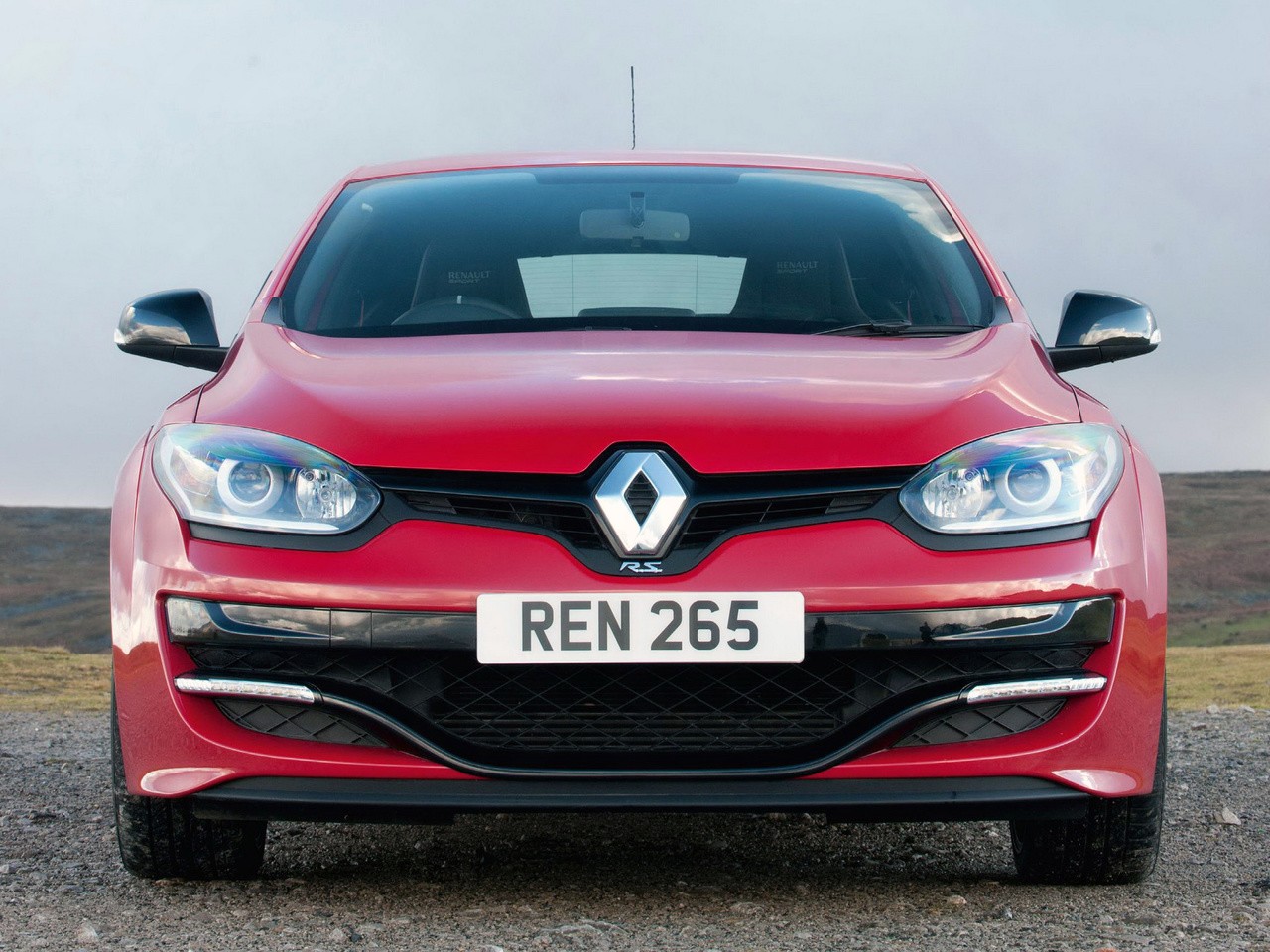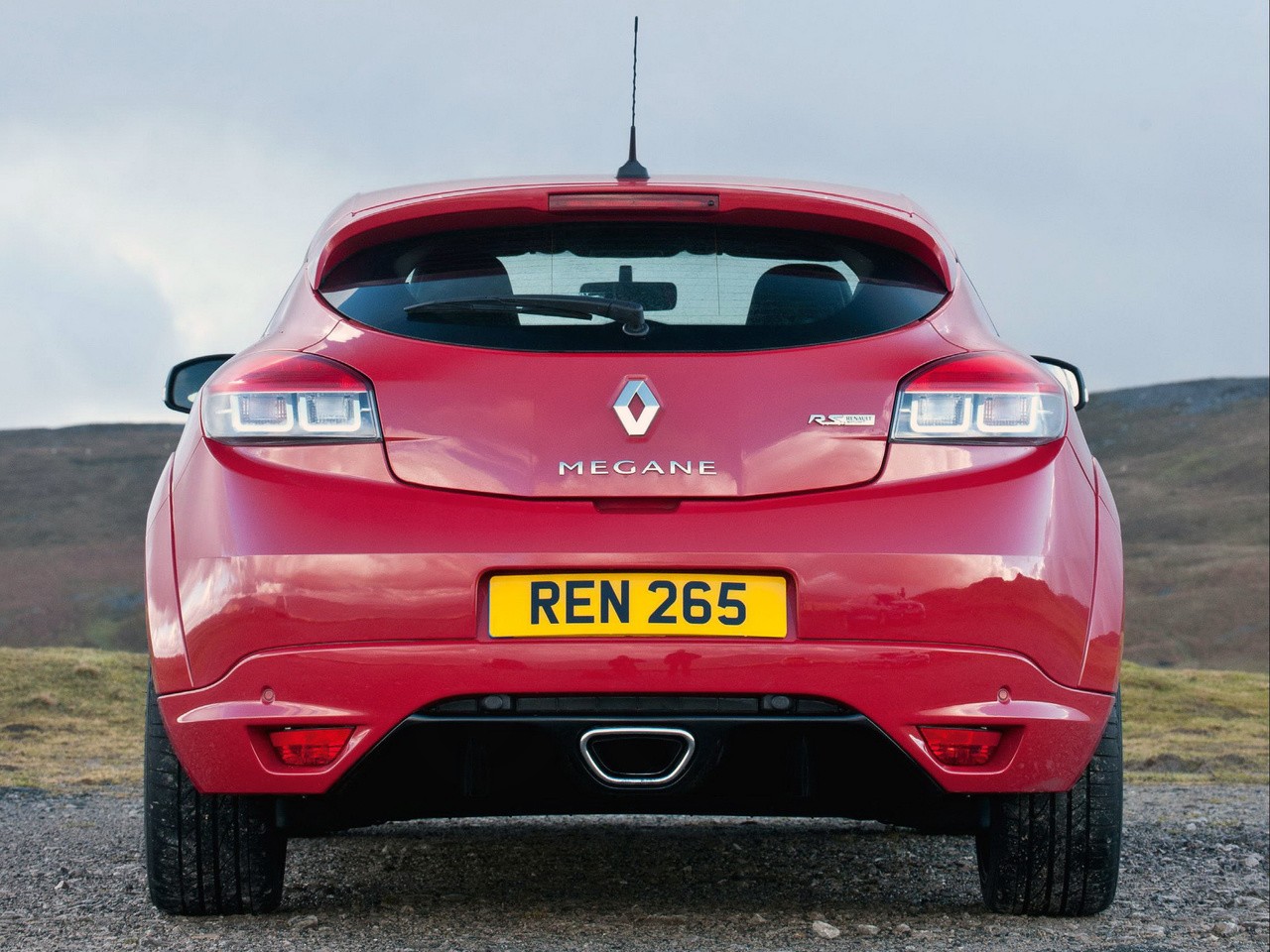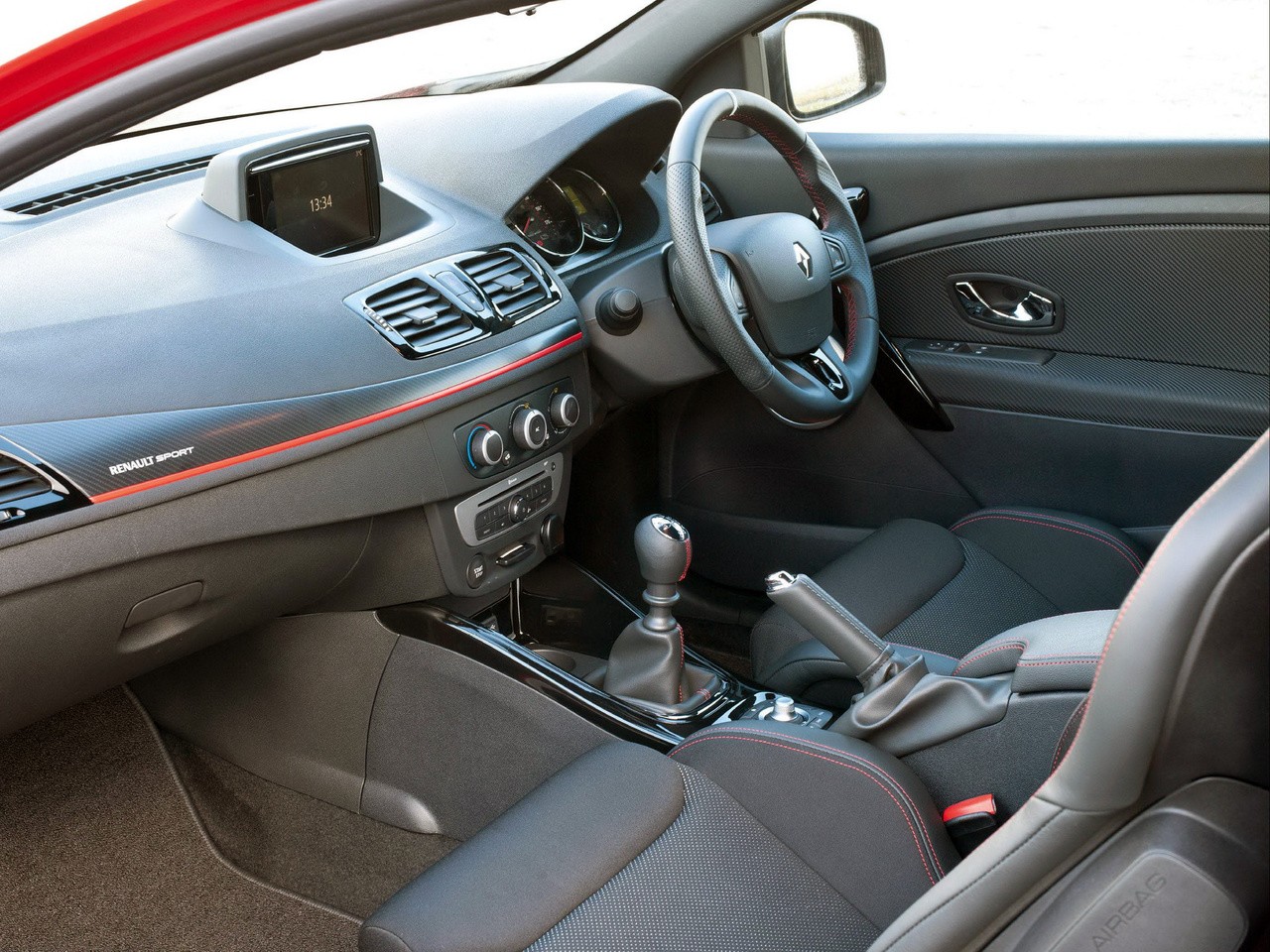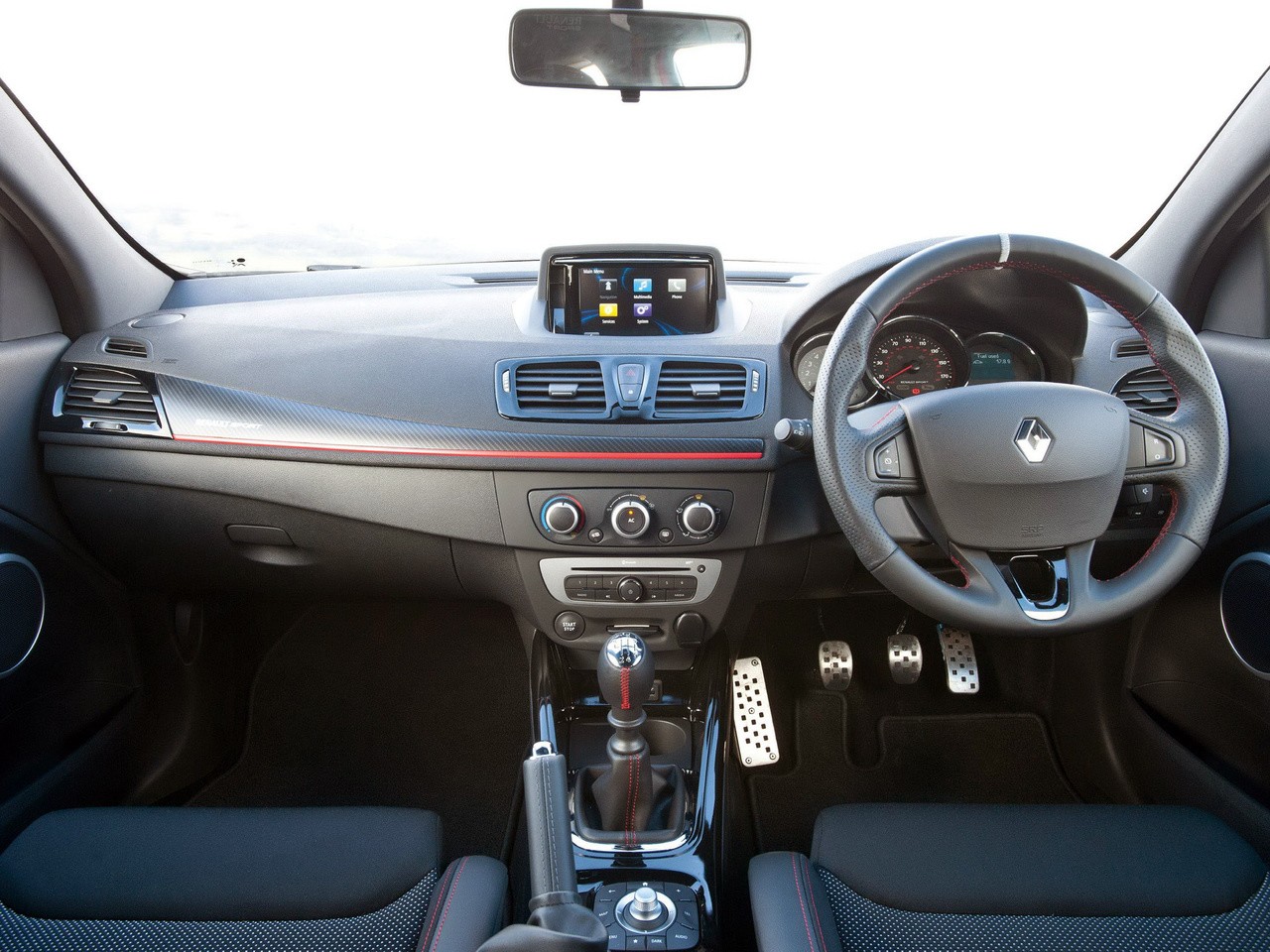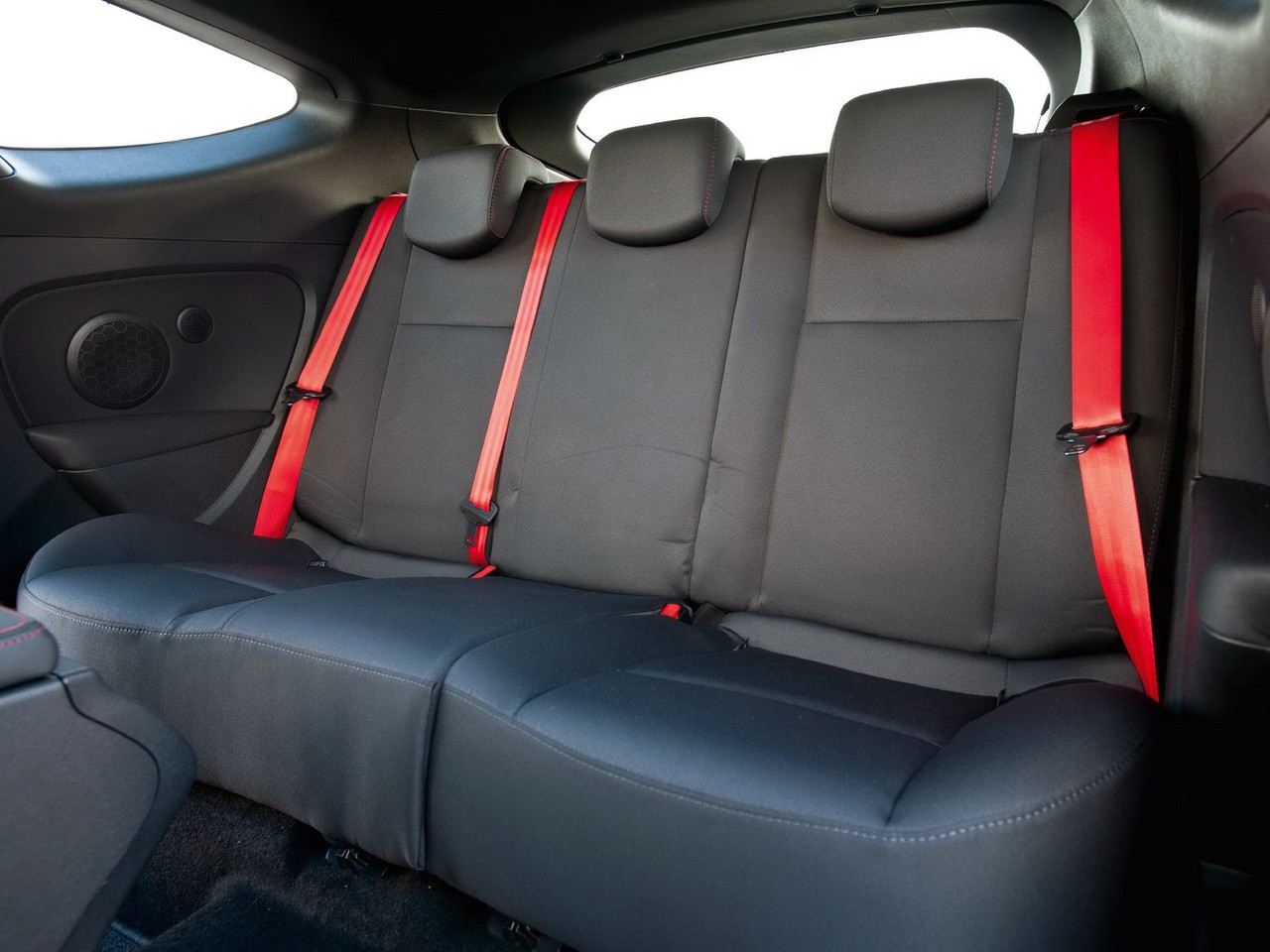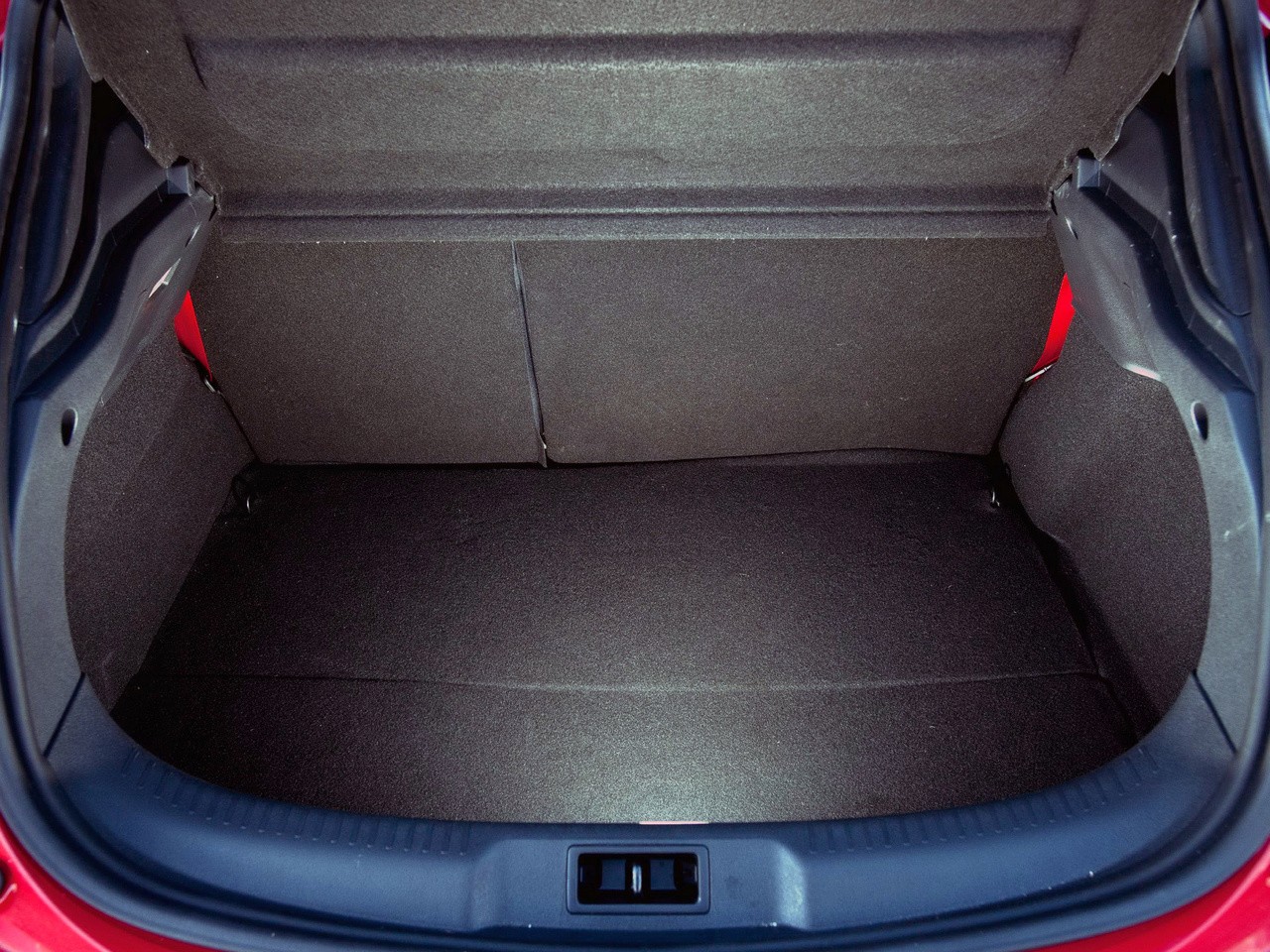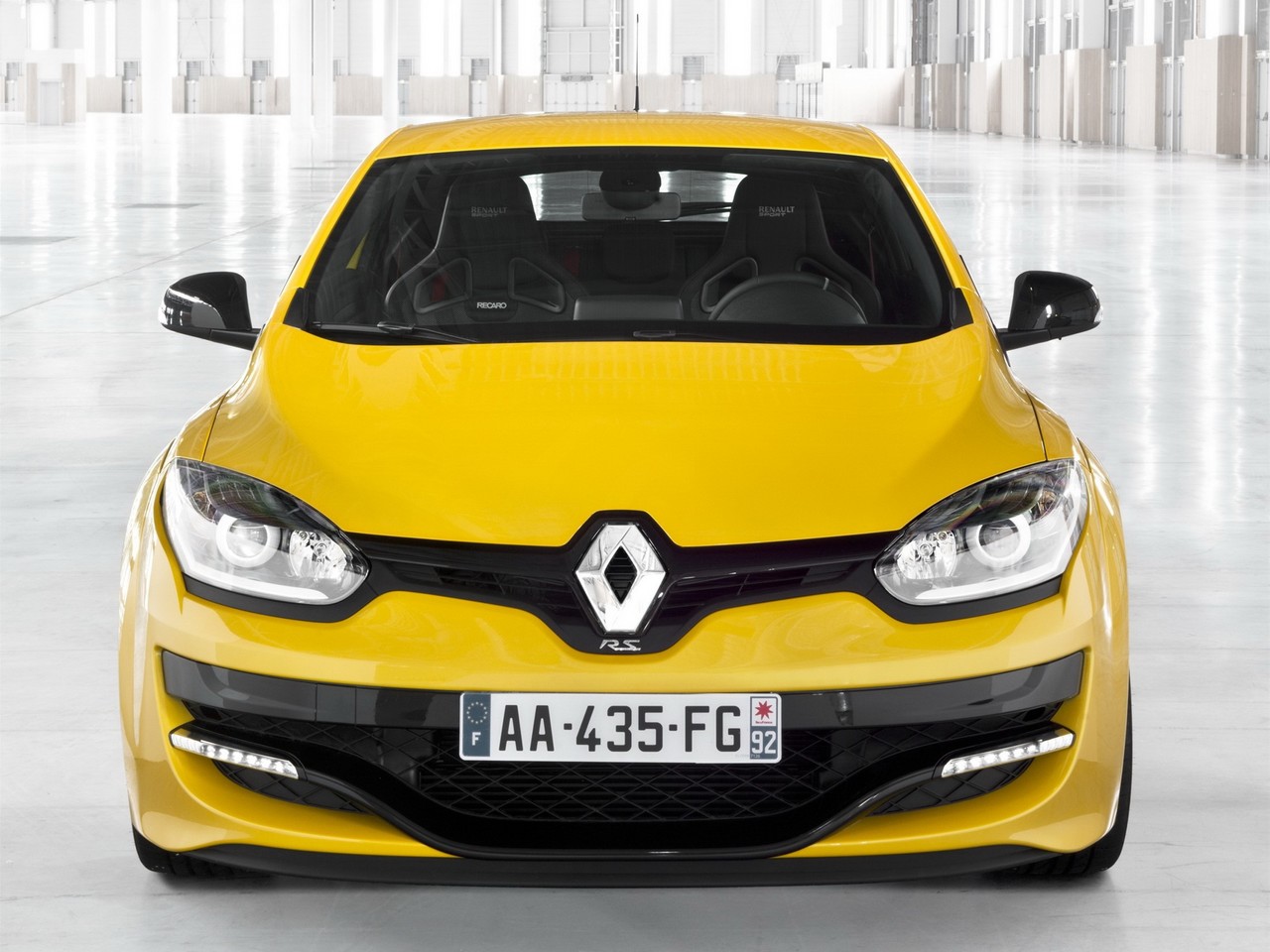
- Powerful 2.0-litre F4Rt turbo petrol engine
- Excellent dynamics
- Accurate, well-weighted steering provides good feedback
- Supportive front seats
- Responsive brakes
- Cramped rear seat
- Underwhelming audio system
- Poor visibility for rear seat occupants
- Negative camber contributes to high tyre wear
Review: Renault X95.I Megane RS 250 (2010-12)
Overview
Released in November 2010, the Renault X95 Phase I (X95.I) Megane RS (short for ‘RenaultSport’) was a three-door, hot hatch. Manufactured in Palencia, Spain, the front-wheel drive Renault Megane RS 250 was powered by a 2.0-litre four-cylinder petrol engine (producing 250 brake horsepower) that was mated to a six-speed PK4 manual transmission. The Megane RS 250 was initially offered in Cup and Cup Trophee editions.
F4Rt engine
The 2.0-litre F4Rt four-cylinder petrol engine had a cast iron block, an alloy cylinder head, sequential multi-point injection, a twin-scroll turbocharger providing peak boost pressure of 2.3 bar (33.35 psi), double overhead camshafts, four valves per cylinder (including sodium-cooled exhaust valves), continuously variable intake valve timing and a compression ratio of 8.6:1.
The F4Rt engine provided 80 per cent of its maximum torque (i.e. 272 Nm) from 1900 rpm and enabled the Megane RS 250 to accelerate from rest to 100 km/h in 6.1 seconds.
| Variant | Editions | Years | Engine | Trans. | Peak power | Peak torque |
|---|---|---|---|---|---|---|
| 250 | Cup, Cup Trophee |
2010-12 | 2.0-litre turbo petrol I4 | 6sp man. | 184 kW at 5500 rpm | 340 Nm at 3000 rpm |
| Monaco GP | 2011 | |||||
| Australian GP | 2012 |
Dimensions
Compared to the X84 Megane RS , the X95 Megane RS was 71 mm longer (at 4299 mm), 71 mm wider (1848 mm), 2 mm lower (1435 mm) and had a 29 mm longer wheelbase (2646 mm).
Suspension
The X95 Megane RS had MacPherson strut front suspension and a programmed-deflection rear torsion beam with a closed-profile beam. Attributes of the front suspension included:
- Renault’s ‘PerfoHub’ independent steering axis design which separated the suspension and steering functions to minimise torque steer. As such, the axis around which the wheel rotated was defined by the pivoting link between the hub carrier and pivot carrier – this reduced the hub level offset (i.e. the distance between the centre of the wheel and the intersection of its rotation and steering axes) to 40 mm. For comparative purposes, the hub level offset for the X95 Megane Coupe was 56 mm;
- Aluminium construction for the pivot, pivot carrier, and lower arm which connected the wheel assembly to the engine sub-frame; and,
- Ball joints between the pivot and pivot carrier to reduce the forces to which the steering axis was subjected.
The front suspension was attached to a ‘horned’ sub-frame – according to Renault, this design provided transverse rigidity three times greater than the X84 Megane RS .
Limited slip differential
For Australia, the Megane RS was fitted with a limited-slip mechanical differential as standard. Produced by GKN Driveline, the differential comprised a knurled helical gear, and satellite and sun gears with parallel axes. When wheelspin occurred, friction was produced on the surfaces of the sun gears – this resulted in a proportion of engine torque being transmitted to the wheel which benefited from the most grip.
The transfer rate was determined by the use of three friction rings that were located between the sun gears and differential casing. For the X95 Megane RS, the transfer rate was 35 per cent, while its Torque Bias Ratio (TBR, the nominal ratio between the torque of the wheel which benefited from the most grip and the wheel which benefited from the least grip) was 2.3:1.
Steering
The Megane RS had rack-and-pinion steering – with an inductive torque sensor – and electric power assistance; the steering ratio was 14.75:1.
Safety equipment
Standard safety equipment for the Megane RS 250 included dual front airbags, front side airbags, full-length curtain airbags, front seat anti-submarining airbags (but not for the Recaro seats on the Cup Trophee edition), ABS, electronic brake force distribution, brake assist, electronic stability control, traction control and front seatbelts with pretensioners and load limiters.
Brakes
The Megane RS 250 had 340 mm by 28 mm ventilated front brake discs with four-piston Brembo callipers and 290 mm by 11 mm solid rear discs.
Features: Megane RS 250 Cup and Cup Trophee
Standard features for the Megane RS 250 Cup included 18-inch ‘Ax-l’ alloy wheels with 235/40 R18 Y Michelin Pilot Sport 2 tyres, a six speaker sound system with a CD player, MP3-compatibility, auxiliary inputs and Bluetooth audio streaming, dual-zone climate control air conditioning, a cooled glovebox, cruise control (with speed limiter), two-tone seats with RenaultSport embroidery, daytime LED running lights, automatic headlights, rain-sensing wipers, rear parking sensors, 60/40 split and folding rear seats, a leather-wrapped steering wheel and gearshift, remote central locking with Renault card, power windows and heated mirrors, a tilt and reach adjustable steering wheel, a height adjustable driver’s seat, tinted windows and an immobiliser.
The Megane RS 250 Cup Trophee was further equipped with 19-inch ‘Steev’ alloy wheels with 235/35 R19 Y Continental Sport Contact 5 Performance (CSC5P) tyres, an eight speaker Arkamys sound system, Recaro front seats, power folding door mirrors, a height adjustable passenger seat, tyre pressure monitoring and interior courtesy lights.
2011 Megane RS 250 Monaco Grand Prix edition
In August 2011, a limited run of fifty Monaco GP editions were released. Compared to the standard Megane RS 250, the Monaco GP edition featured satellite navigation, leather seats, power adjustable and heated front seats, directional bi-xenon headlights and a fixed glass roof with shade cover.
Visually, the Monaco GP edition could be identified by its pearlescent white paint finish, black headlight masks and piano black door mirrors, fog light surrounds and rear diffuser. Inside, there were white interior highlights (centre console, dash strip and doorhandles) and ‘Monaco GP’ stitching for the seats and floor mats.
2012 Megane RS Australian GP edition
In March 2012, a limited run of fifty Australian GP editions released. Compared to the standard Megane RS 250, the Australian GP edition featured 19-inch alloy wheels with Bridgestone RE050A tyres, black leather Recaro front seats, a satellite navigation system, directional bi-xenon headlights, front and rear parking sensors, a panoramic glass roof and gloss black paint finish.
Related links
- Specifications: Renault X95.I Megane RS 250 (September 2010)
- Brochure: Renault X95.I Megane RS 250 (February 2011)
Review: Renault X95.II Megane RS 265 (2012-14)
Overview
Released in August 2012, the X95 Phase II (X95.II) Megane RS range consisted of the 265 variant and additional editions. Compared to its X95.I predecessor, peak power and torque increased by 11 kW and 20 Nm, respectively, due to an increase in peak turbo pressure from 2.3 bar to 2.5 bar (36.25 psi) and a revised air intake system. In order to obtain these high outputs, however, the driver had to engage the ‘Sport’ drive mode. If Sport mode were not engaged, peak outputs were the same as its X95.I predecessor (i.e. at 184 kW and 340 Nm).
Visually, the X95.II Megane RS 265 could be identified by its new headlights with black surrounds, two rows of daytime LED running lights and ‘RS’ badges for the alloy wheels. Inside, there was a new steering wheel, red stitching and ‘RS Monitor’ which provided access to performance data and enabled the driver to select from five throttle maps (‘snow’, ‘progressive’, ‘linear’, ‘sport’ and ‘extreme’).
| Editions | Years | Engine | Trans. | Peak power | Peak torque | |
|---|---|---|---|---|---|---|
| Megane RS 265 |
Cup | 2012-14 | 2.0-litre turbo petrol I4 | 6sp man. | 195 kW at 5500 rpm | 360 Nm at 3000 rpm |
| Cup+ | 2013-14 | |||||
| Trophy | 2012-13 | |||||
| Trophy+, | 2012-14 | |||||
| Trophy 8:08 Red Bull |
2012 | |||||
| Red Bull Racing RB8 | 2013 | |||||
| Sport Limited | 2014 |
Features
Compared to its X95.I predecessor, standard features for the X95.II Megane RS 265 Cup were unchanged. Released in late 2013, the Cup+ was further equipped with charcoal leather trimmed front seats with heating and a power adjustable driver’s seat. Visually, the Cup+ could be identified by its body-coloured bumpers with gloss black front bumper detailing, door mirrors and rear diffuser.
Relative to the standard Cup, the RS 265 Trophy editions were further equipped with 19-inch alloy wheels, Recaro front seats, a proximity key, push-button start and tyre pressure monitoring.
Beyond this, the Trophy+ editions added satellite navigation with a seven-inch display, leather seats, power adjustable front seats (with driver’s seat memory settings), heated front seats, directional bi-xenon headlights, front parking sensors, a reversing camera and a panoramic glass roof.
2012 Megane RS Trophy 8:08
To coincide with the release of the RS 265, 100 limited-run ‘Trophy 8:08’ editions were released, with the ‘8:08’ referring to the time taken for the RS 265 to complete a lap of the Nurburging circuit in Germany. Compared to the Trophy edition on which it was based, the Trophy 8:08 was distinguished by its Bridgestone Potenza RE050A tyres, leather-trimmed Recaro seats and directional bi-xenon headlights. Paint finishes for the Trophy 8:08 were limited to liquid yellow and pearl white.
2012 Megane RS Red Bull edition
In October 2012, a limited-run Red Bull edition was released. Compared to the standard RS 200, the Red Bull editions had the Cup chassis and were fitted with 18-inch black TIBOR alloy wheels. Inside, the Red Bull editions featured Recaro front seats, an RS Monitor, an individually-numbered commemorative plaque and hands-free entry.
Visually, the Red Bull editions were distinguished by their ‘Star’ black metallic paint finishes with contrasting liquid yellow highlights on the F1-style front blade, door mirror housings and diffuser, contrasting red brake calipers, black chequered flag rooftop decals and Red Bull Racing logos.
2013 Megane RS Red Bull Racing RB8 edition
In November 2013, deliveries of 120 Red Bull Racing RB8 editions commenced. Visually, the Red Bull Racing RB8 edition was distinguished by its 19-inch black alloy wheels with pin stripes, ‘Crepuscule Blue’ paint finish, Red Bull and Platinum Silver door handles, door mirrors and spoilers.
Inside, the Red Bull Racing RB8 edition featured ‘Red Bull’ embossed Recaro front seats and floor mats, while the door-sill trims were individually numbered.
2014 Megane RS Sport Limited Edition
In March 2014, fifty (50) RS 265 Sport Limited Edition models were released. Visually, the Sport Limited Edition could be identified by its unique Pacific Blue paint finish, 18-inch Silver Tibor alloy wheels, and gloss black treatment for the front and rear diffusers, door handles, door mirrors and rear spoiler. Inside, the Sport Limited Edition featured Recaro front seats finished in yellow cloth with black ‘leatherette’ trim
Due to its cheaper manufacturer’s list price of $37,990, the Sport Limited Edition omitted a number of features that were standard on the RS 265 Cup such as climate control air conditioning (instead fitted with manual air conditioning), automatic headlights, rain-sensing wipers and the limited slip differential. Unlike other RS 265 models, however, the engine for the Sport Limited Edition had a ‘Stop and Start’ function which enabled it to shut down when the vehicle was stationary.
Related links
- Press kit: Renault X95.II Megane RS 265 (August 2013)
- Brochure: Renault X95.II Megane RS 265 (February 2014)
- Brochure: Renault X95.II Megane RS 265 Red Bull (October 2013)
- Brochure: Renault X95.II Megane RS 265 Sport Limited (March 2014)
Review: Renault X95.III Megane RS (2014-16)
Overview
Released in Australia in June 2014, the X95 Phase III (X95.III) Megane RS introduced a revised range and a ‘Stop & Start’ function – across the range – which enabled the engine to shut down when the vehicle was stationary in traffic; for the combined EU test cycle, fuel consumption was 7.5 litres per 100 km.
Visually, the X95.III Megane RS could be identified by its front mask which featured elliptical headlights, an upper grille which spanned the distance between the headlights, a larger ‘Renault’ badge and a full-width lower grille with daytime running lights.
Inside, the X95.III Megane RS introduced Renault’s ‘R-Link’ connected multimedia system which could be controlled via a multi-directional joystick on the central console. Integrated in the R-Link multimedia touchscreen, the RS Monitor 2.0 offered an ‘RS Replay’ function which enabled the driver to upload a racetrack (via USB), map their performance and download the data for analysis with the RS Replay software.
| Edition | Engine | Trans. | Peak power | Peak torque | |
|---|---|---|---|---|---|
| Megane RS 265 | Cup, Cup Premium |
2.0-litre turbo petrol I4 | 6sp man. | 195 kW at 5500 rpm | 360 Nm at 3000-5000 rpm |
| Megane RS 275 | Cup Premium, Trophy |
2.0-litre turbo petrol I4 | 6sp man. | 202 kW at 5500 rpm | 360 Nm at 3000-5000 rpm |
Features: Megane RS 265
Compared to its predecessor, standard features for the X95.III Megane RS 265 included 18-inch ‘Tibor’ alloy wheels with Michelin Pilot Sport tyres, Renault’s ‘R-Link’ entertainment and navigation system, a proximity key and push button start.
The RS 265 Cup Premium was further equipped with 19-inch ‘Steev’ alloy wheels with Continental ContiSportContact tyres, leather Recaro bucket seats and a rear view camera.
Megane RS 275 Cup Premium
The Megane RS 275 Cup Premium was released in Australia in September 2015. Compared to the RS 265 Cup Premium, the Megane RS 275 Cup Premium was fitted with 19-inch ‘Black Speedline Turini’ alloy wheels, Bridgestone Potenza RE050A tyres and an Akrapovic titanium central exhaust with carbon fibre tip. Inside, features were extended to include Alcantara/leather Recaro front seats, a Zamac alloy gear knob and an Alcantara wrapped steering wheel, gear shift lever and handbrake grip.
The Megane RS 275 Cup Premium could be identified by its platinum grey front blade and was available in five paint finishes: Glacier White, Diamond Black, Titanium Grey, Pearl White and Liquid Yellow.
Megane RS 275 Trophy
Released in Australia in September 2014, the Megane RS 275 Trophy had Renault’s Cup chassis, an Akrapovic titanium exhaust system – which contributed to a louder exhaust note – and an Akrapovic carbon exhaust tail pipe. Australian deliveries of the Megane RS 275 Trophy were limited to 100 vehicles.
Visually, the Megane RS 275 Trophy could be identified by its ‘Trophy’ branding on the Platinum Grey F1-style front blade, a Platinum Grey chequered flag graphic at the bottom of the doors, ‘Trophy’ decals over the rear wheel arches and numbered door sill guards. The Megane RS 275 Trophy was available in Liquid Yellow and Pearl White paint finishes.
Inside, the Megane RS 275 Trophy featured leather and Alcantara Recaro front bucket seats with red stitching, ‘Renault Sport’ badging for the headrests, red stitching for the Alcantara steering wheel trim and handbrake gaiter, and a Zamac gear lever knob.
Megane RS 275 Trophy-R
Manufactured in late 2014, the Megane RS 275 Trophy-R had a limited production run of 250 vehicles. Of these, 50 were allocated to Australia and deliveries were to commence in January 2015. Compared to the RS 275 Trophy, the Trophy-R was fitted with Michelin Pilot Sport Cup 2 tyres, Ohlins ‘Road & Track’ one-way adjustable dampers with composite springs, Recaro Pole Position polycarbonate monocoque front seats (finished in alcantara and saving 42 kg) and a mechanical limited-slip differential; the rear seats were also omitted so that a rear strut brace could be fitted.
For Australia, the Megane RS 275 Trophy-R had a recommended retail price (RRP) of $61,990 (excluding on-road costs) and this included the Nurburgring Accessory Kit. Developed to reduce kerb mass, and enable the Megane RS 275 Trophy-R to complete a lap of the Nurburging in 7 minutes and 54.36 seconds, the Nurburgring Accessory Kit consisted of a lithium-ion battery (which saved 15 kg), steel/aluminium brake discs (3 kg) and six-point harness belts with aviation-style buckles.
Visually, the Megane RS 275 Trophy-R could be identified by its 19-inch ‘Speedline Turini’ alloy wheels; it was also available with a new two-tone colour scheme which consisted of a Pearl White paint finish and Diamond Black roof.
Related links
- Specifications: Renault X95.III Megane RS 275 Trophy (June 2014)
- Specifications: Renault X95.III Megane RS (September 2015)
- Press kit: Renault X95.III Megane RS 275 Trophy R (June 2014)
- Wikipedia.org: Renault Megane RS
